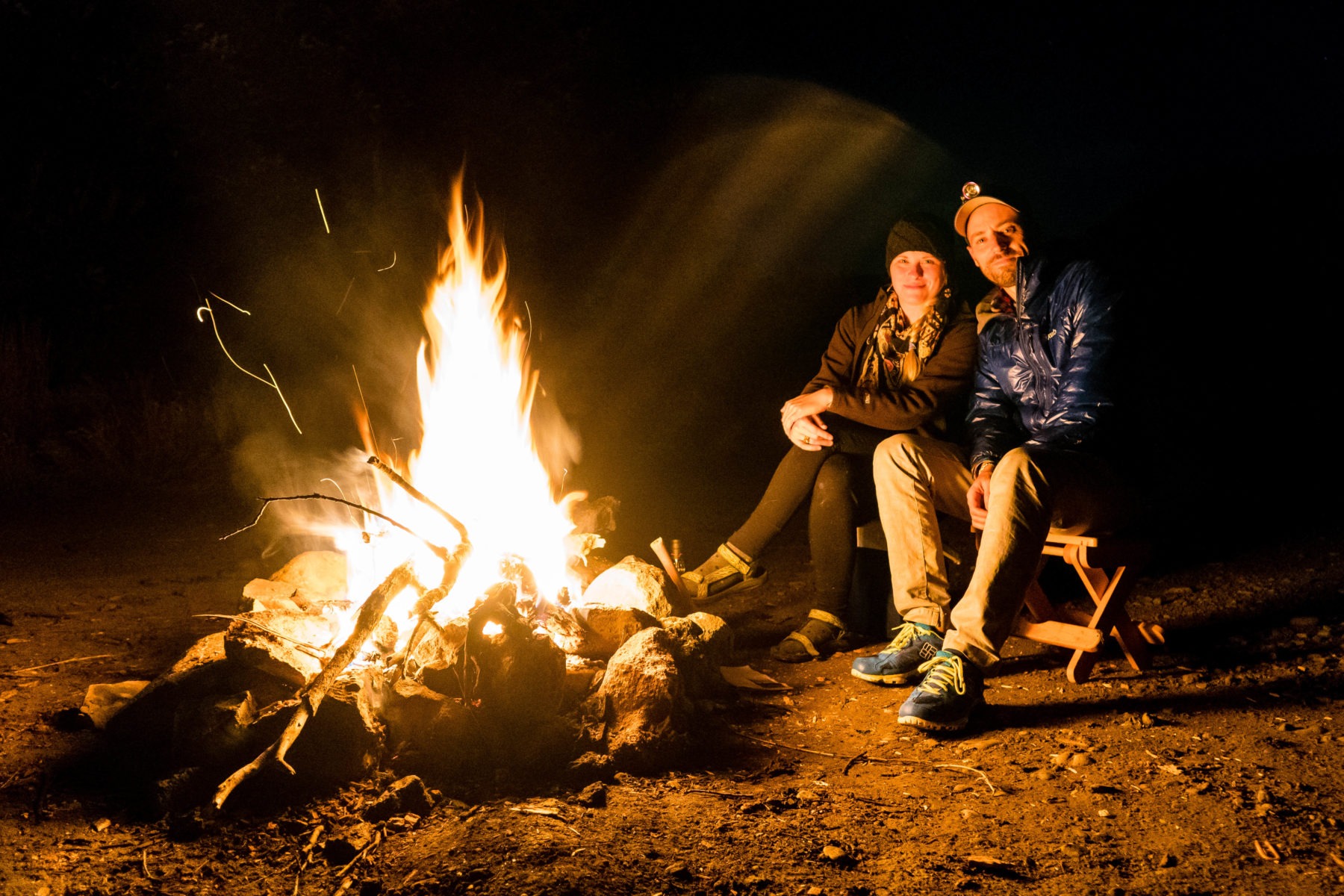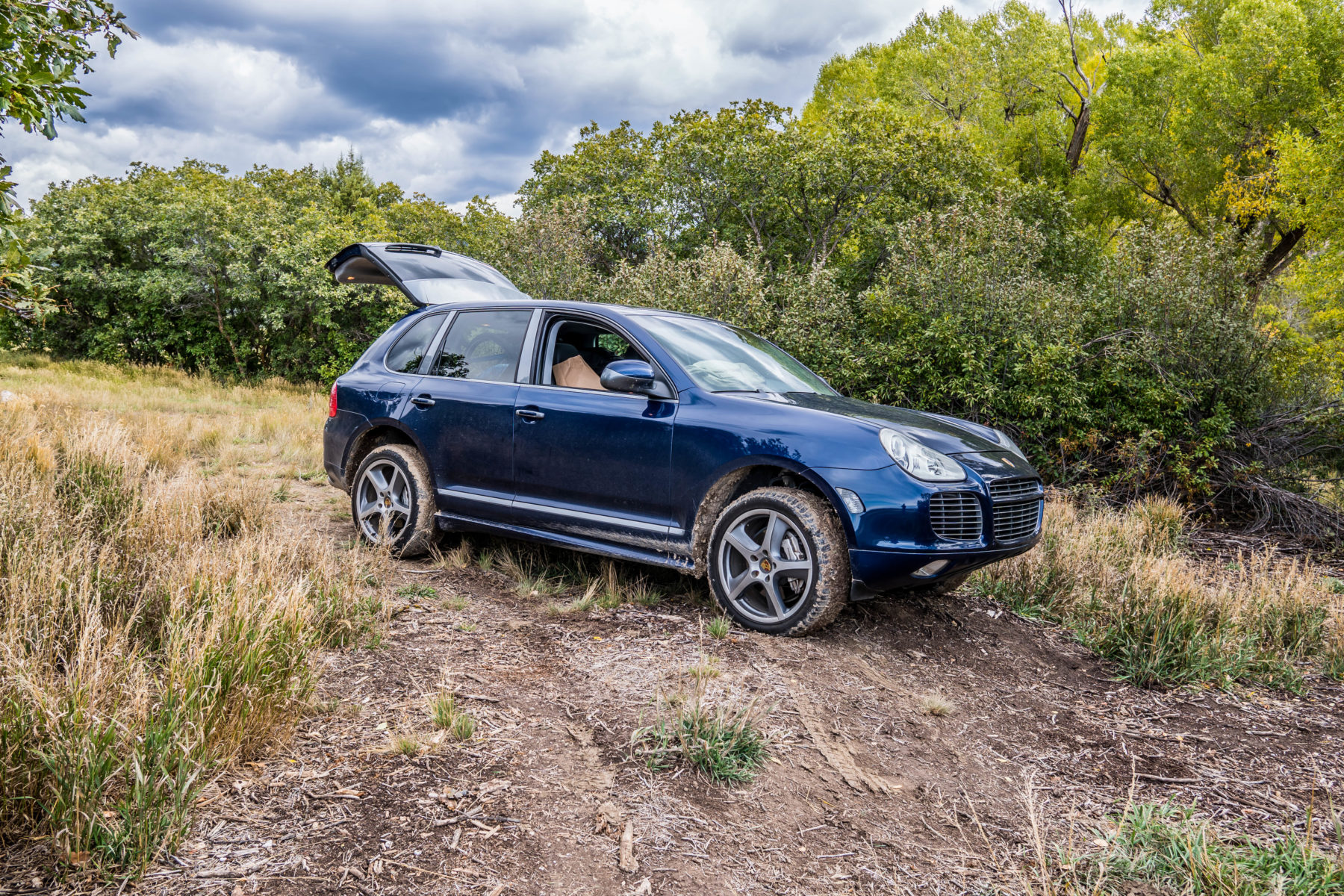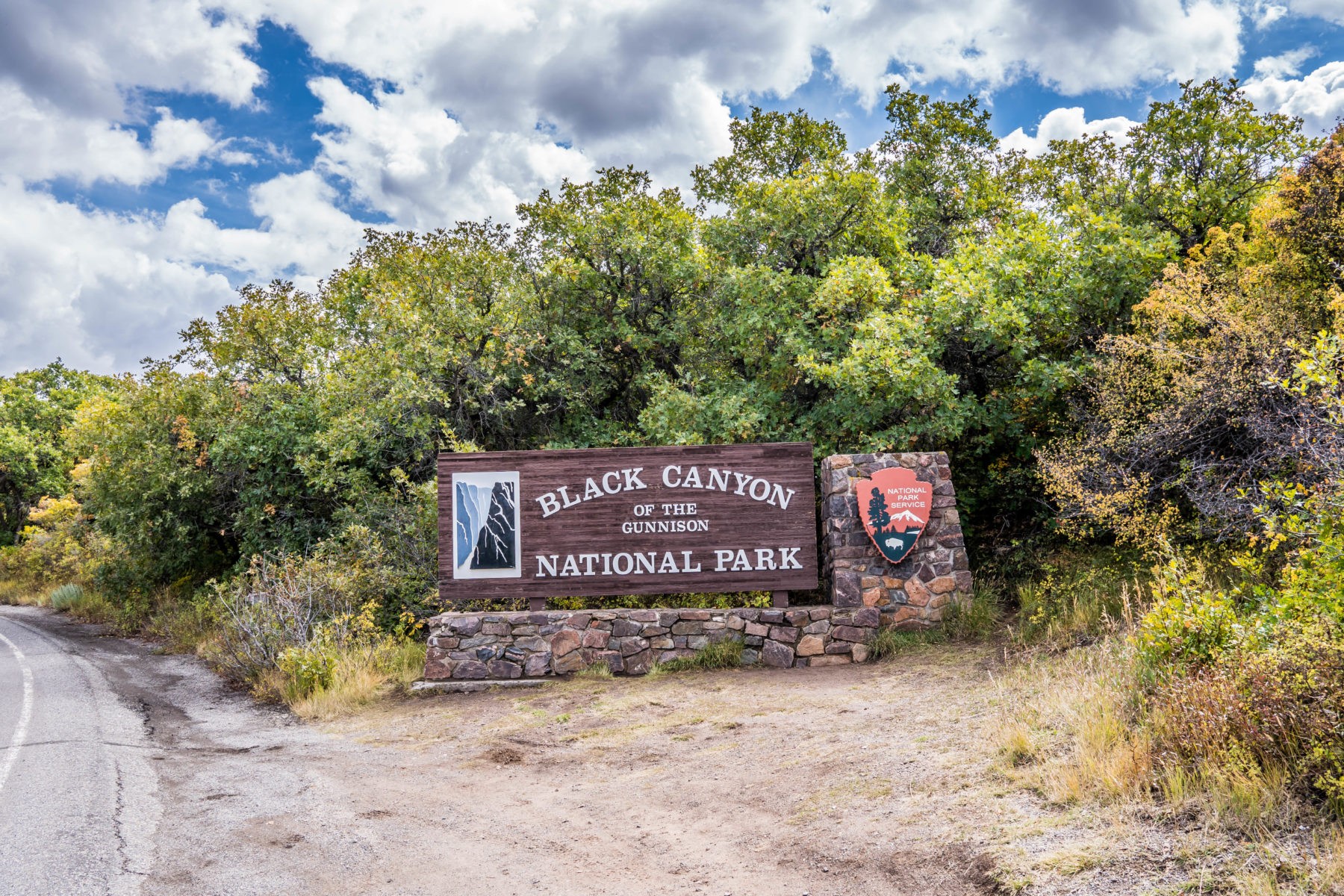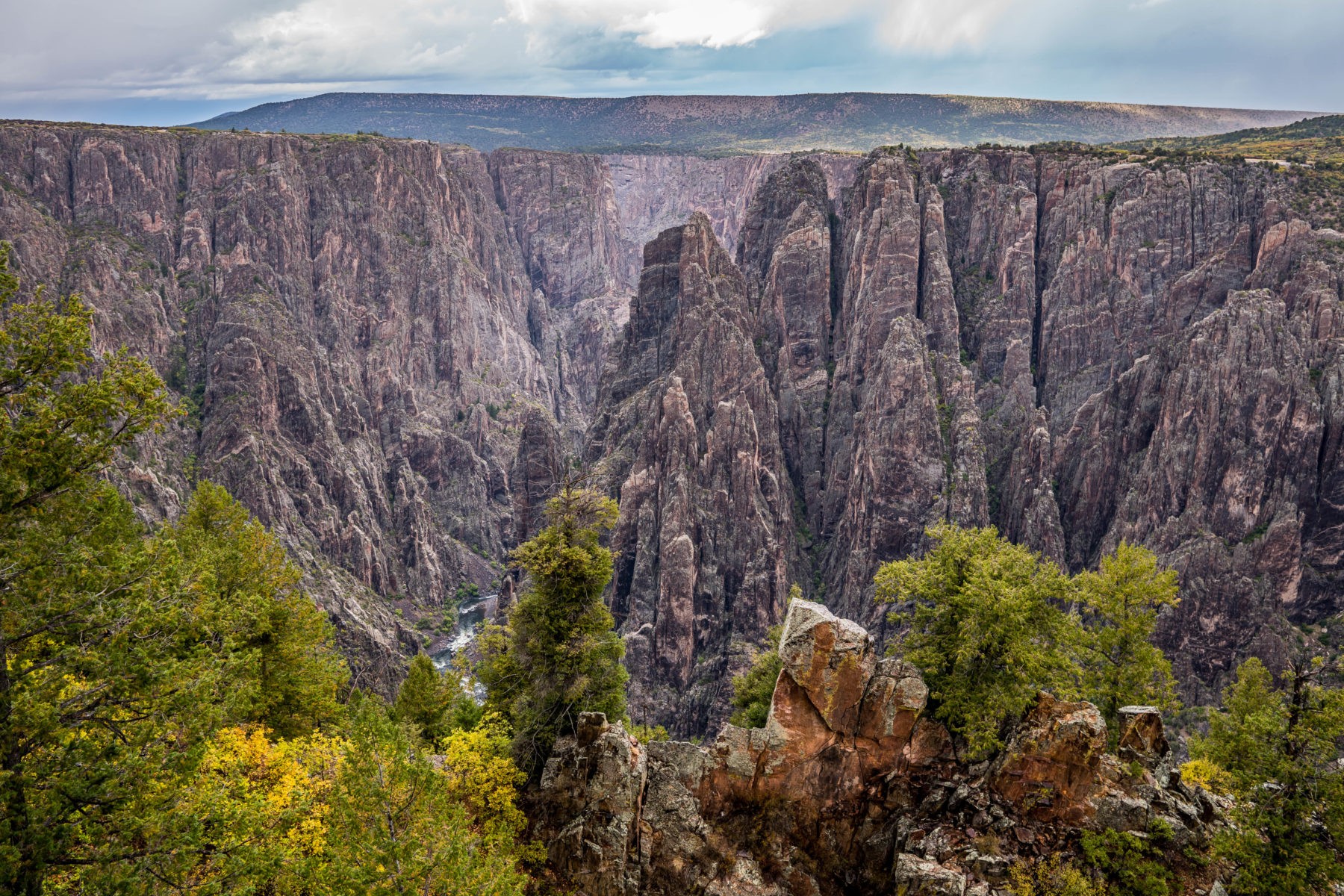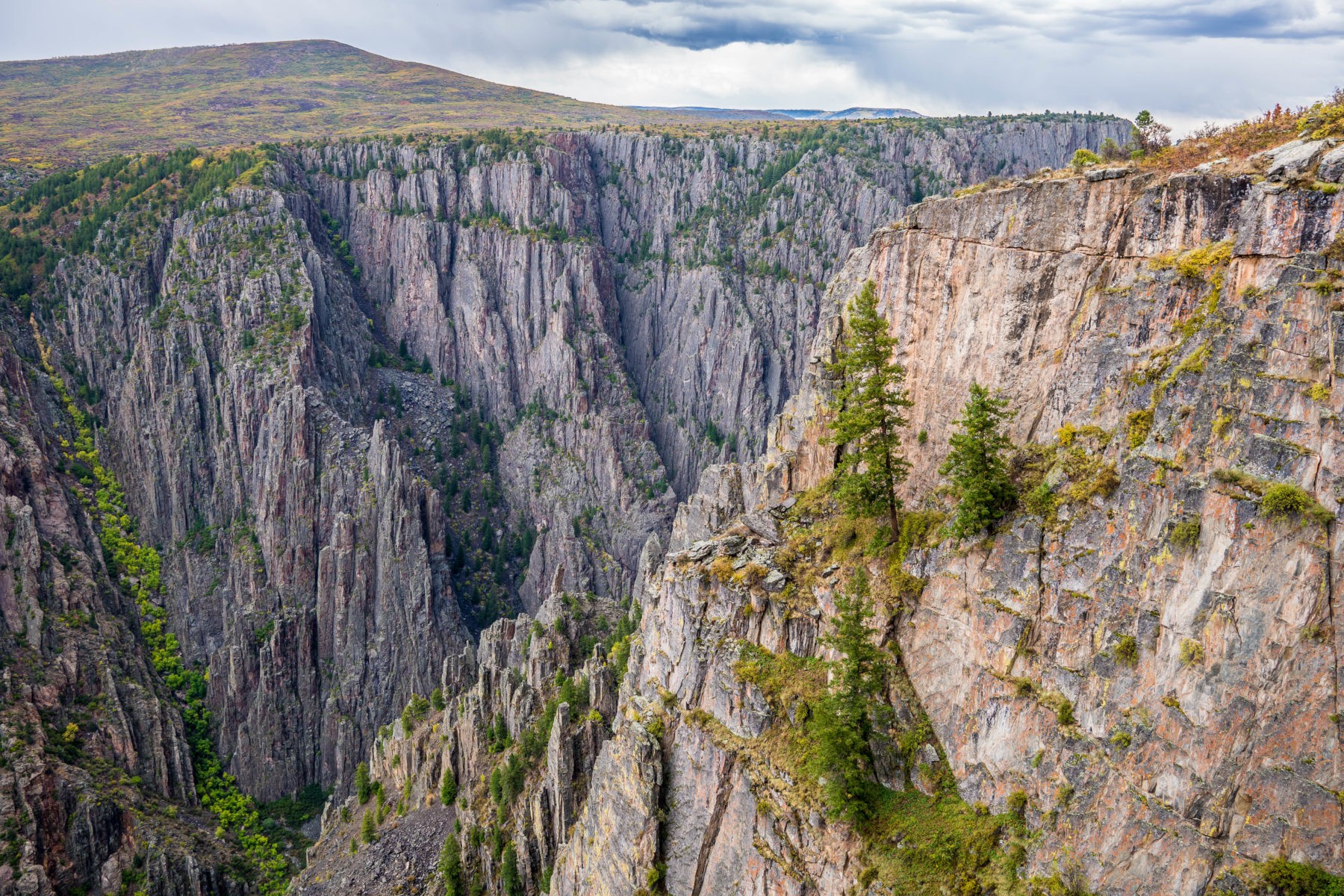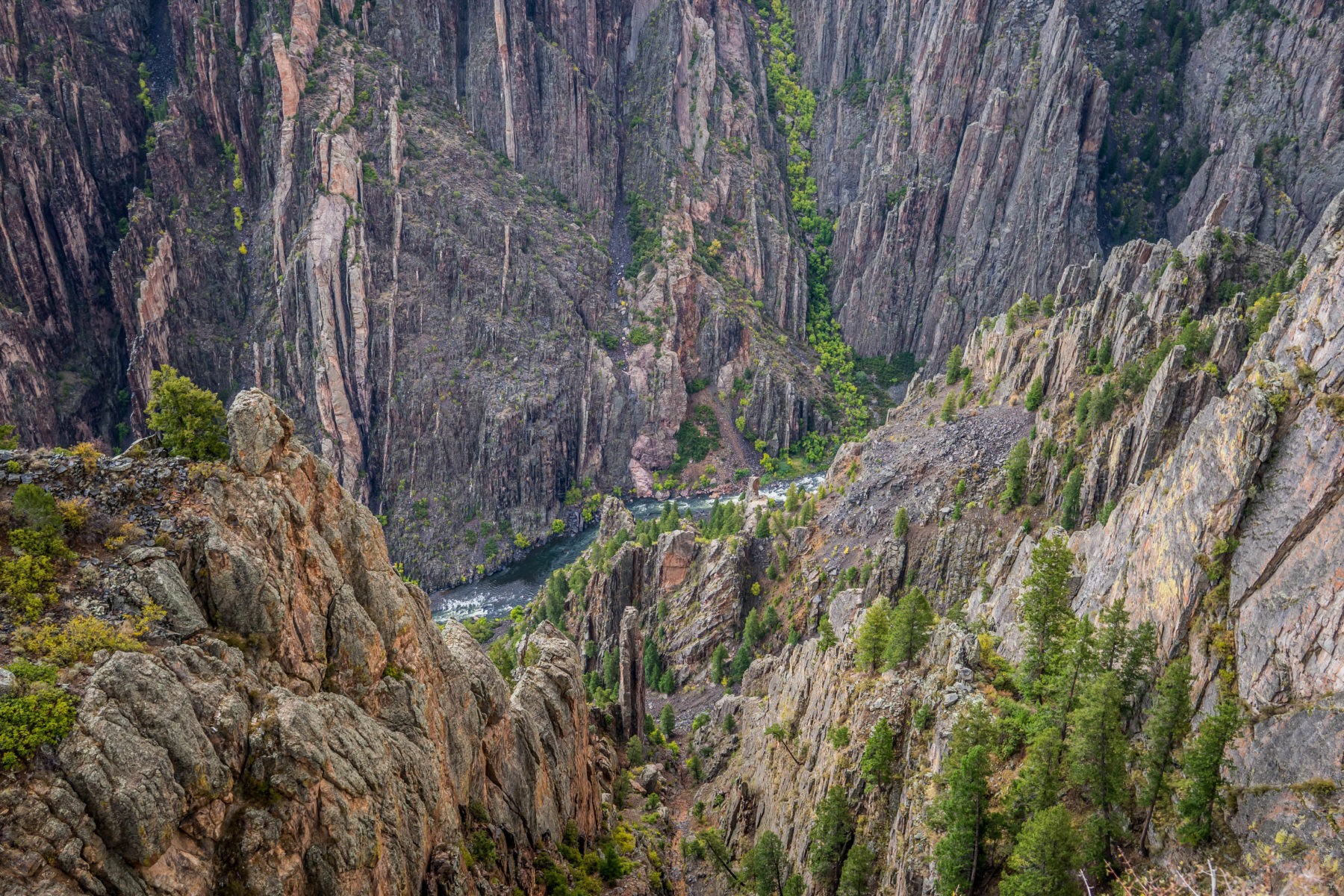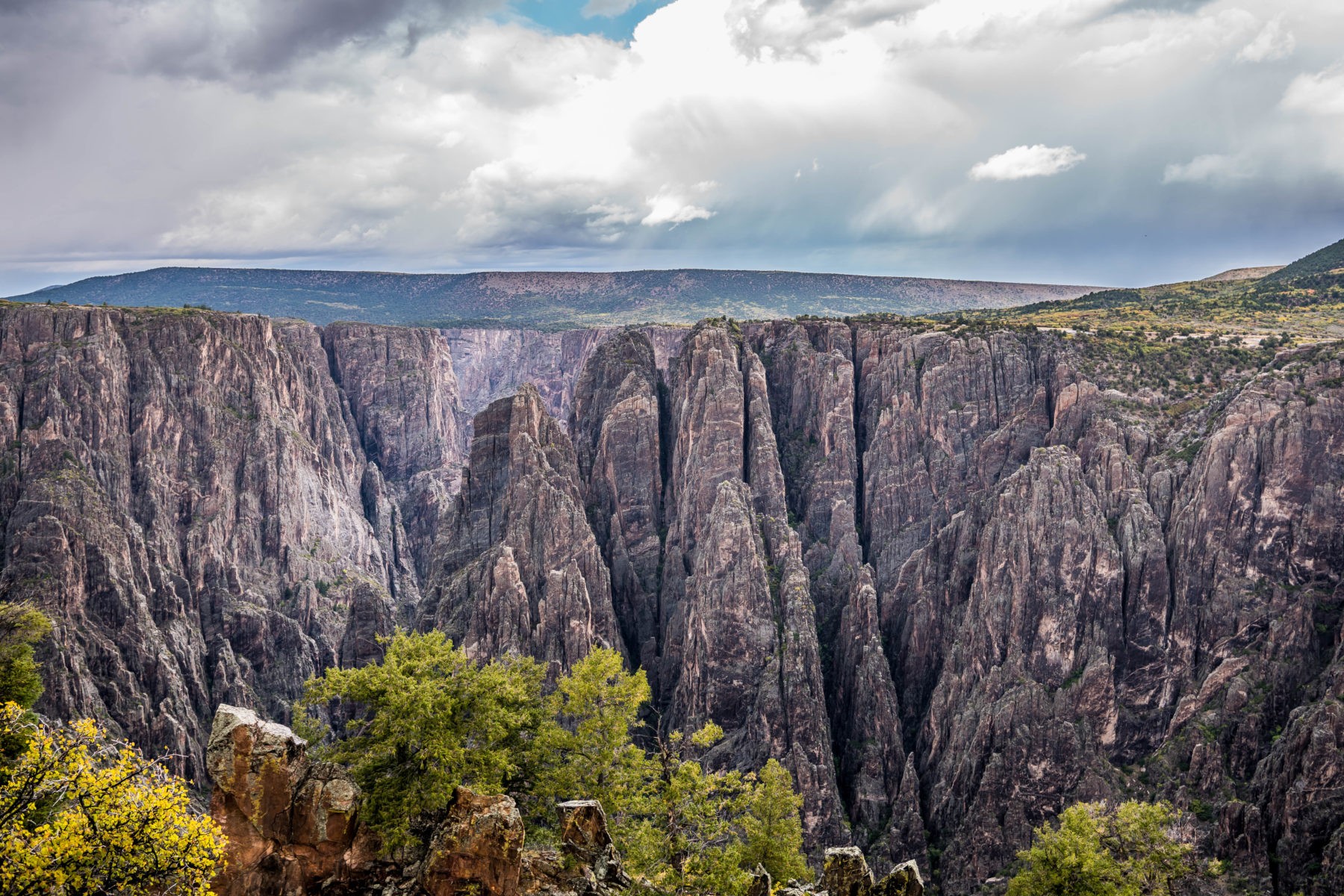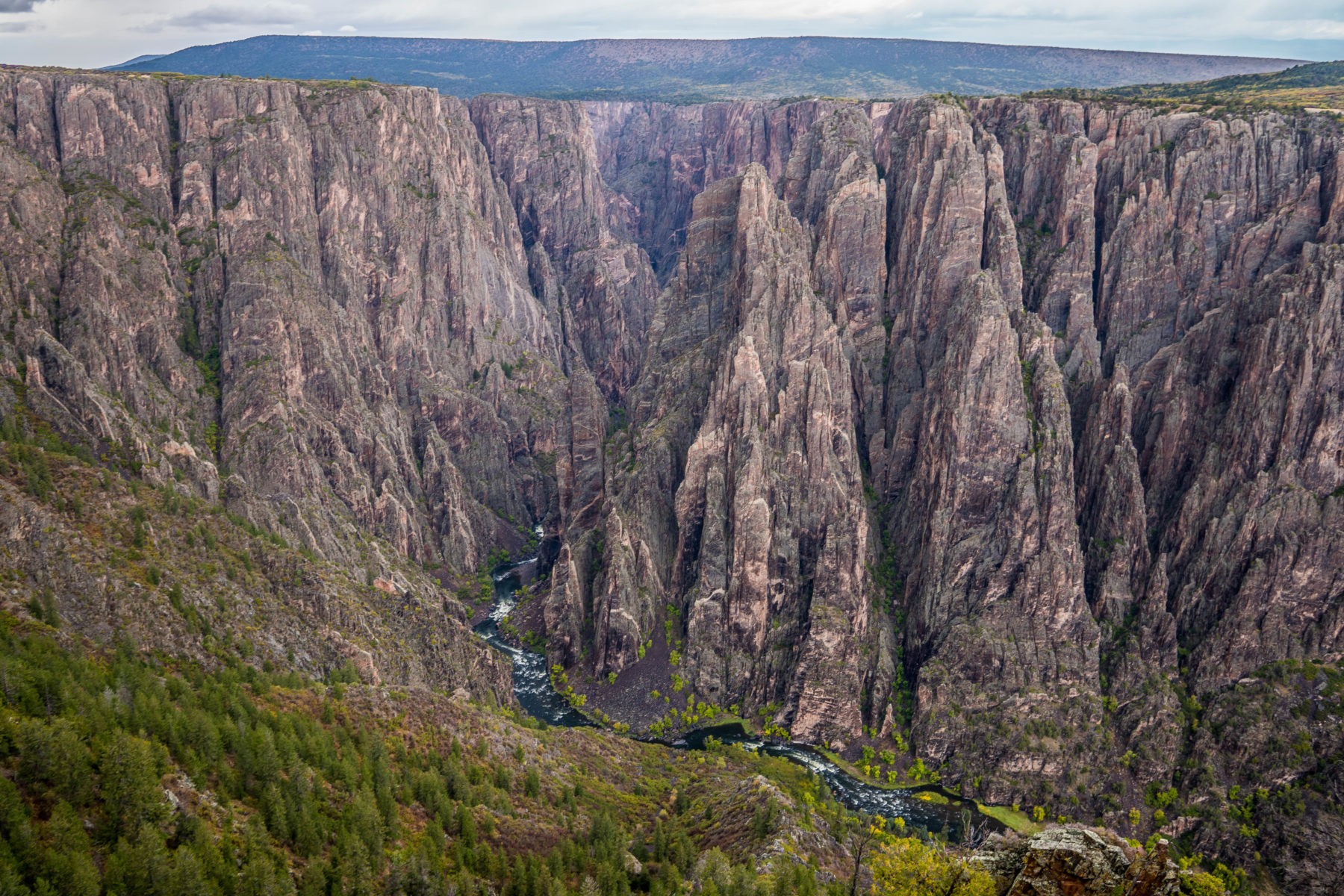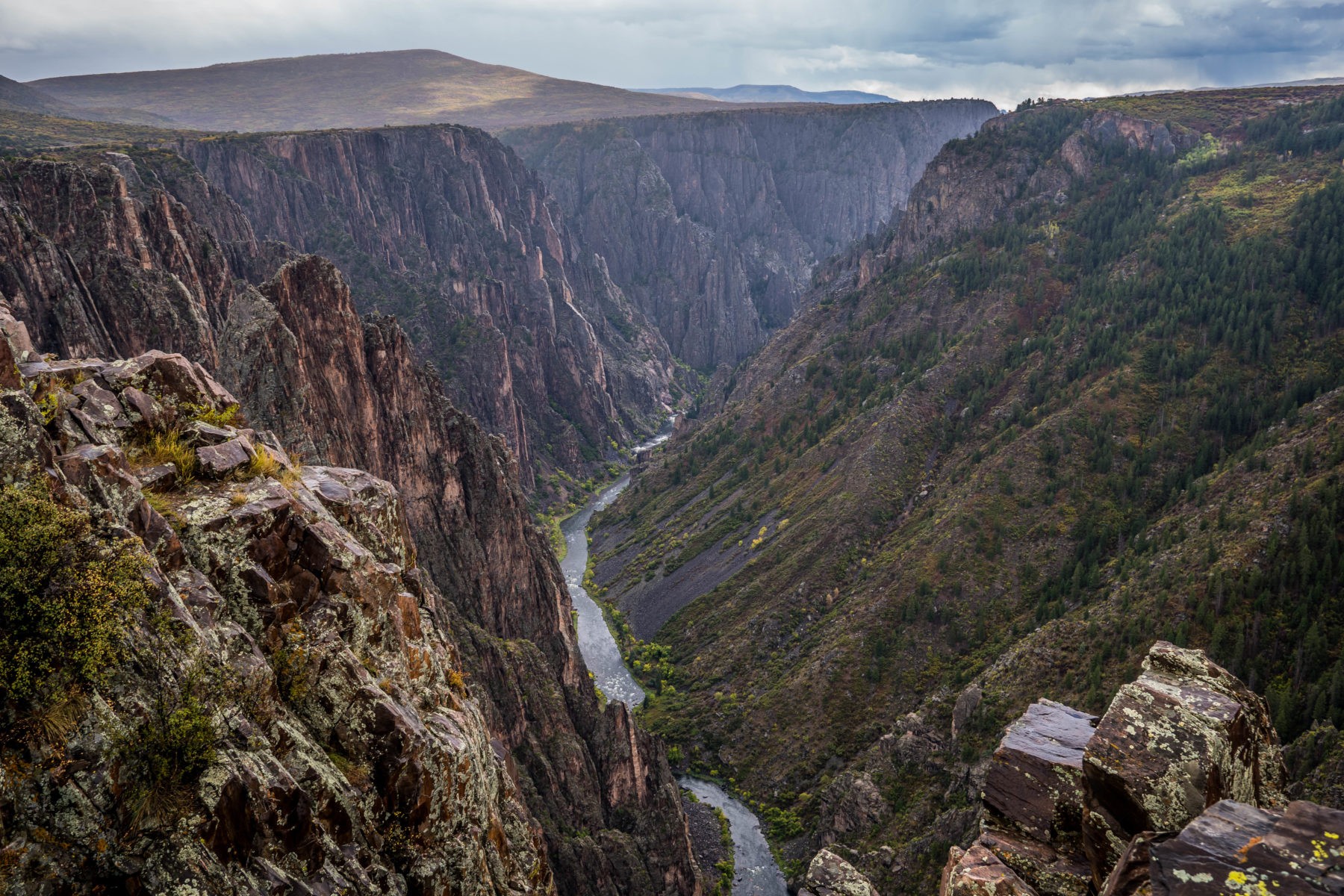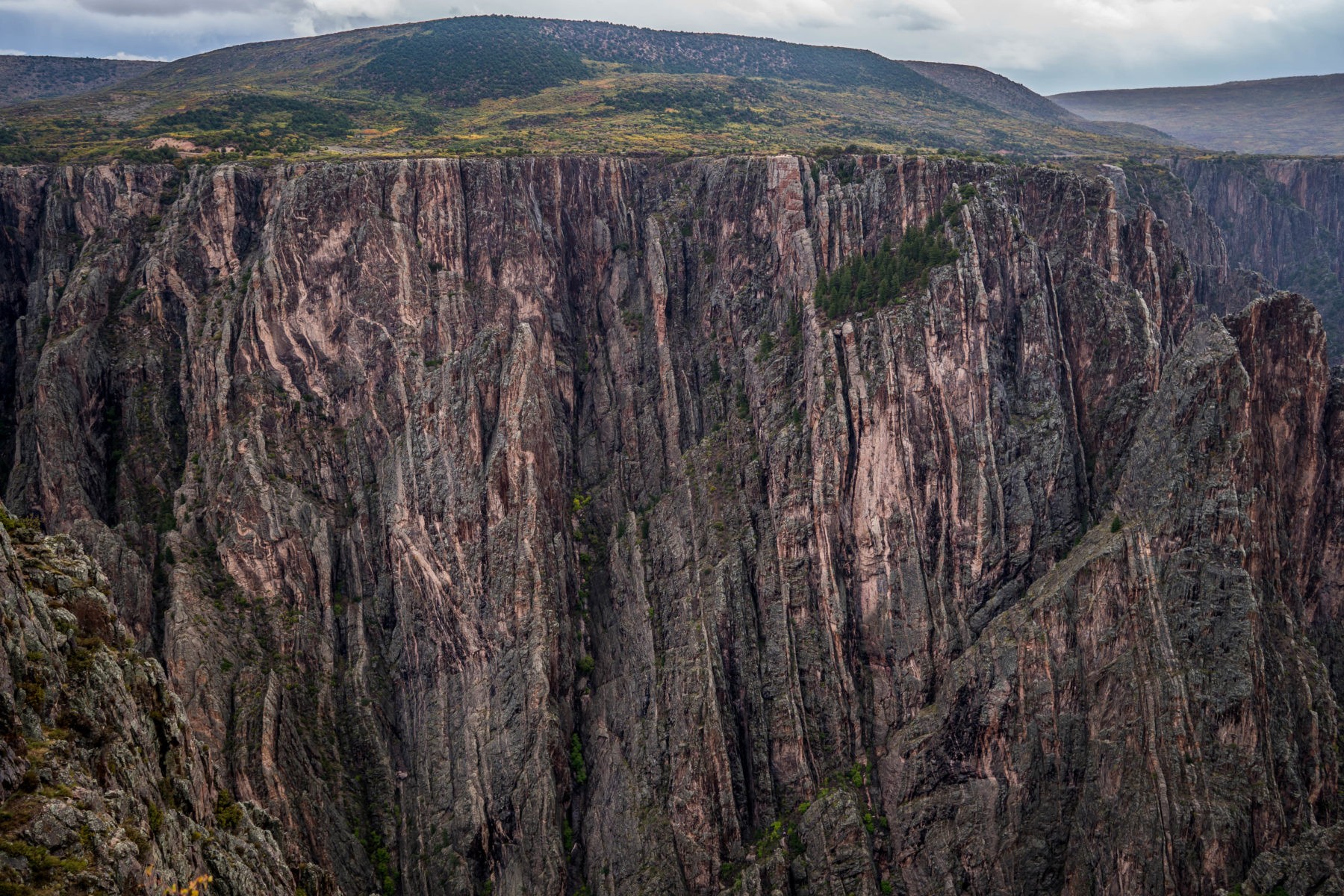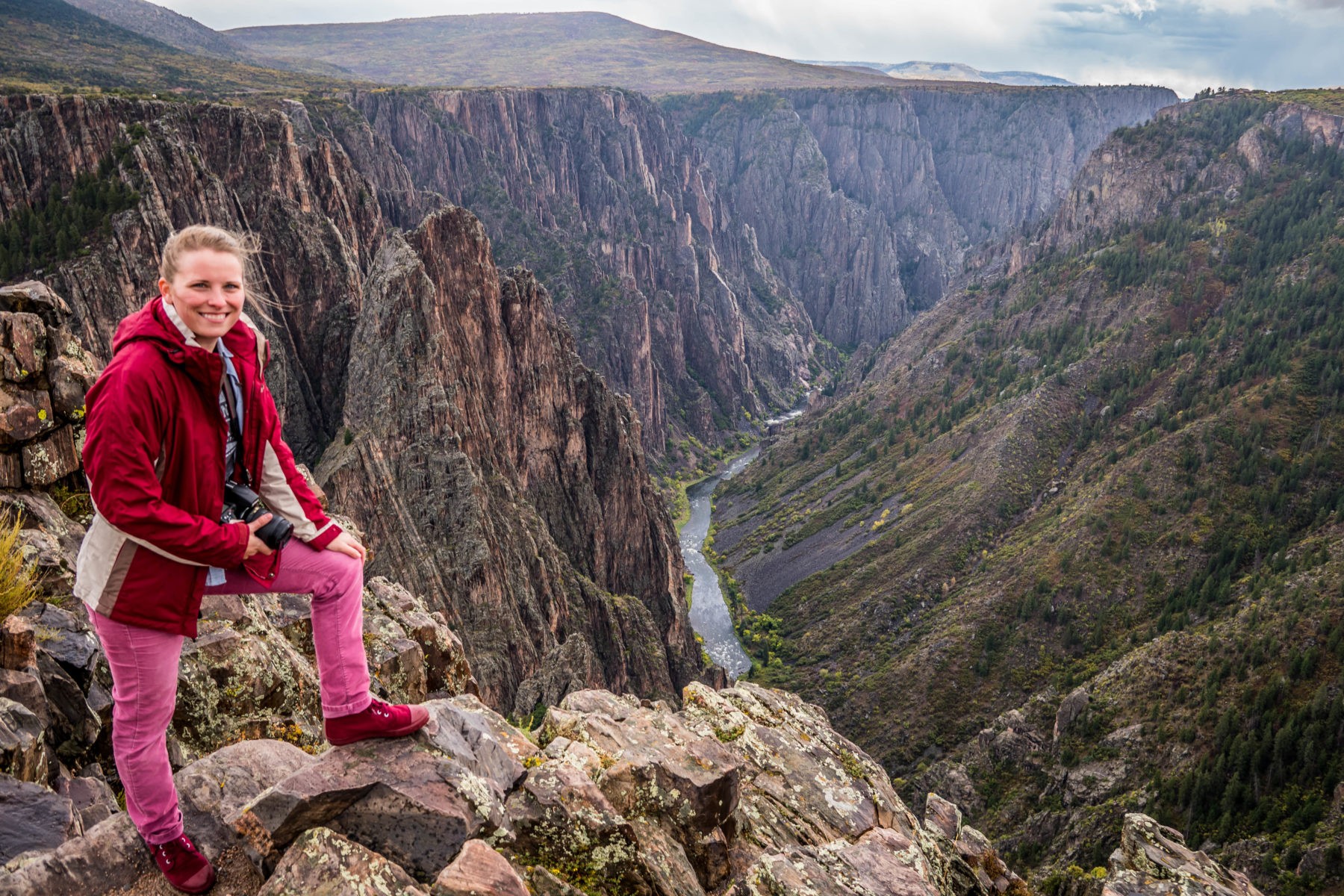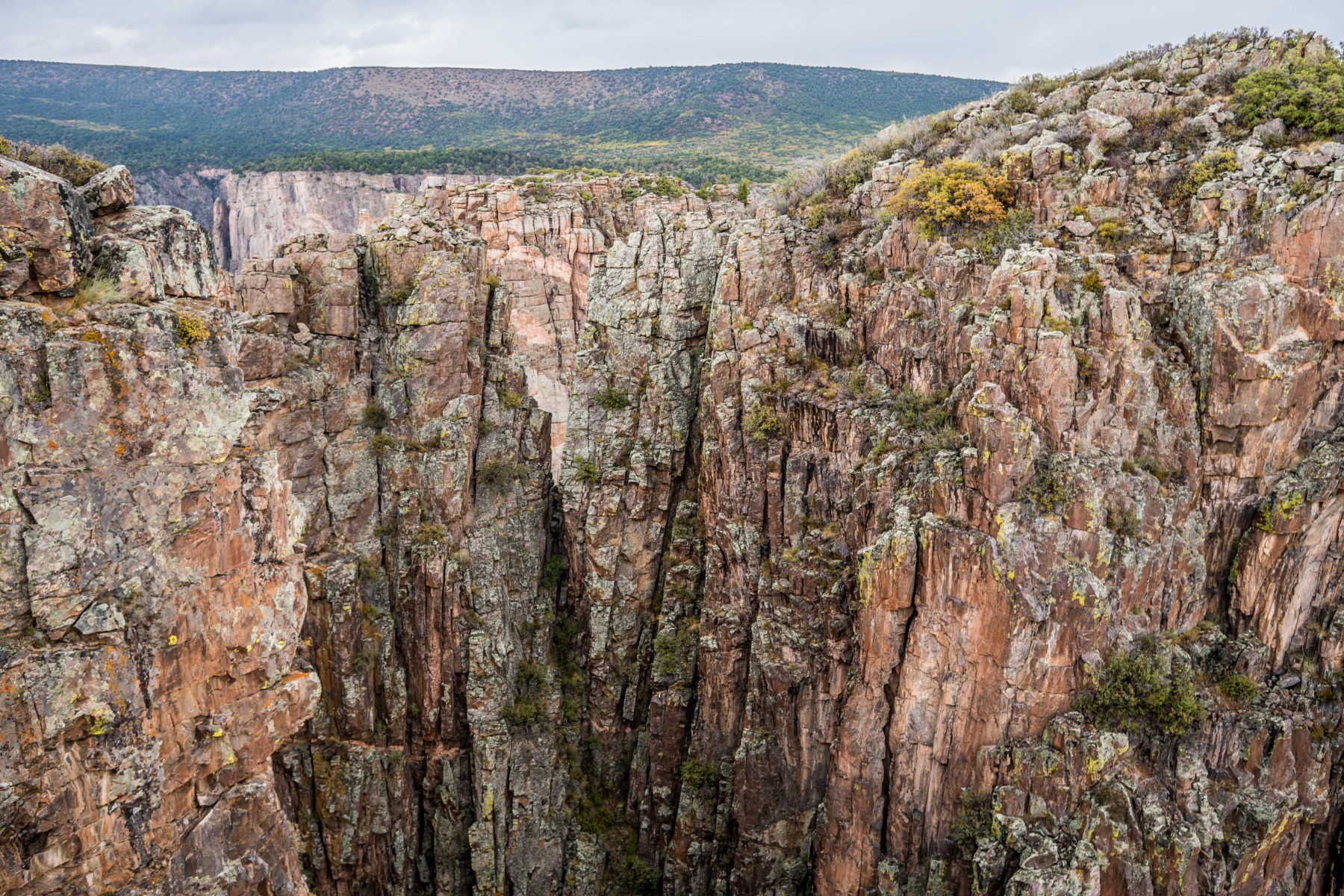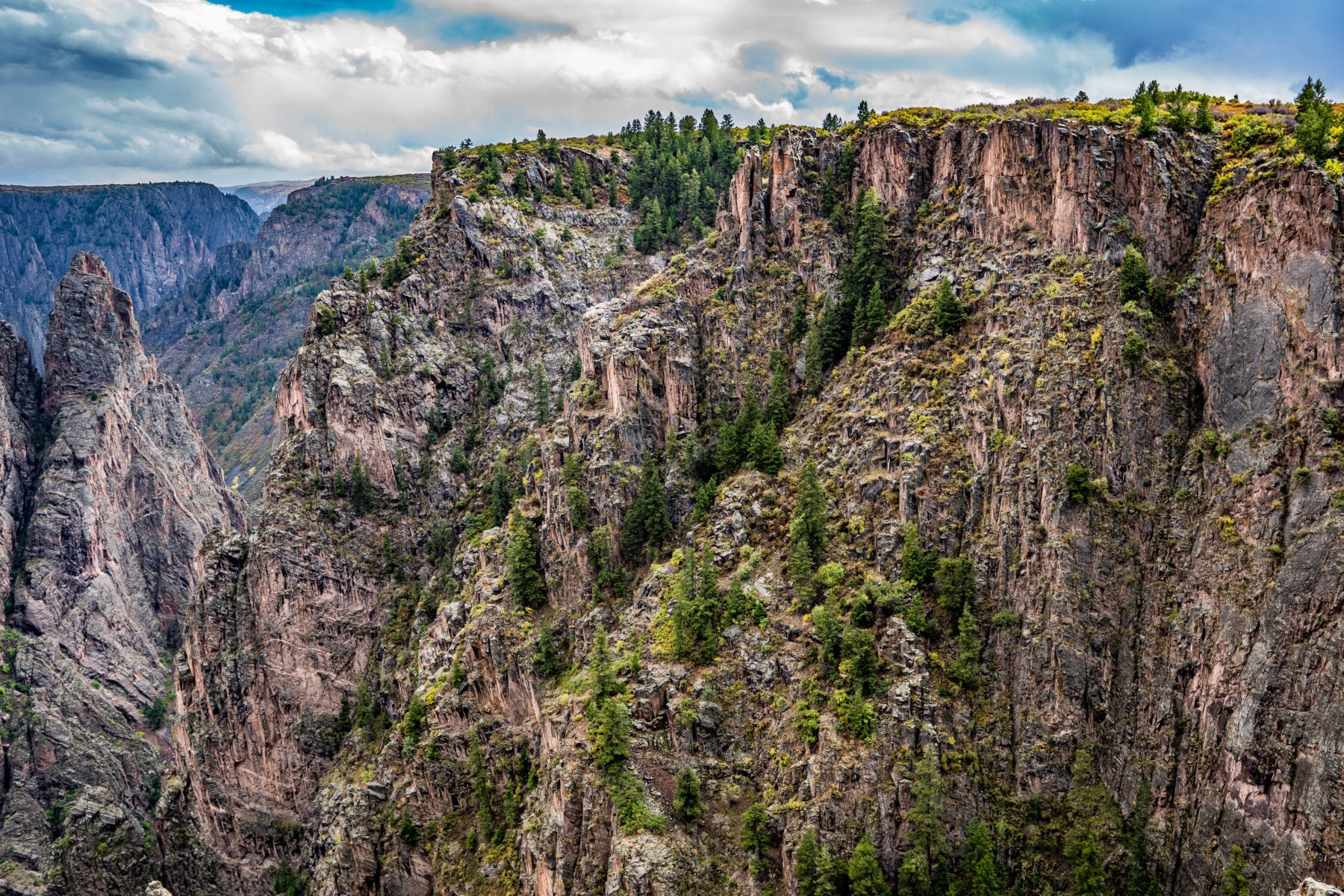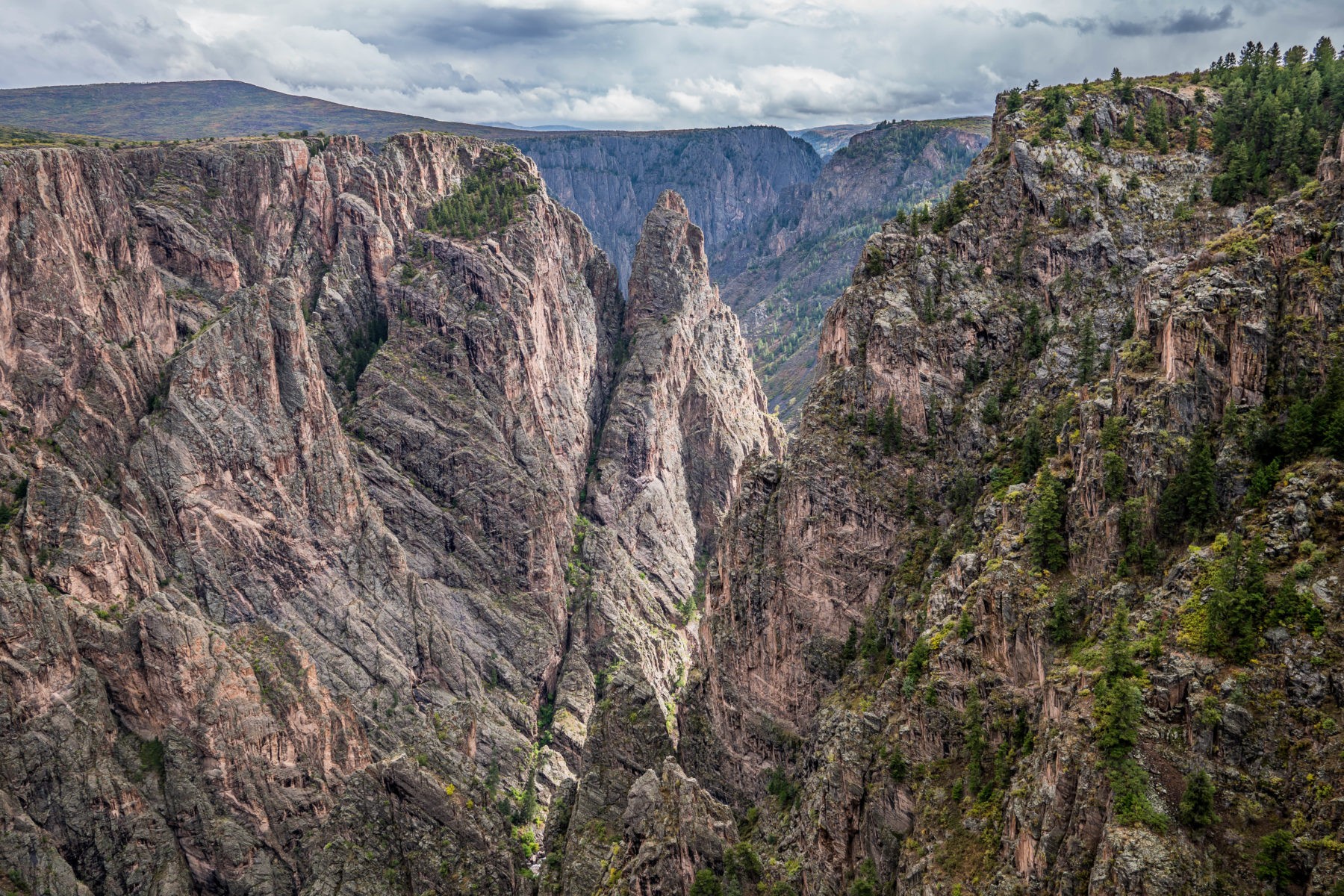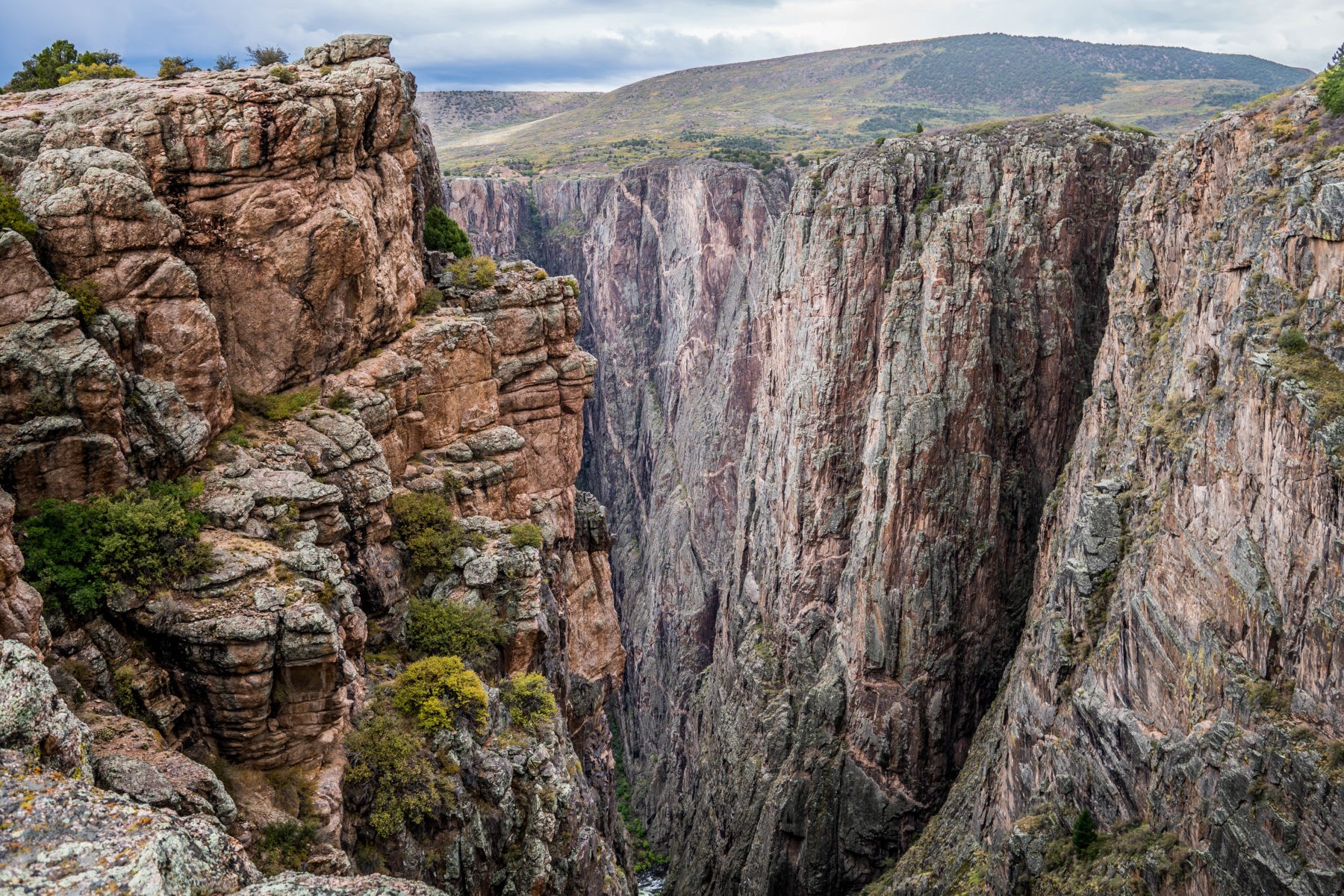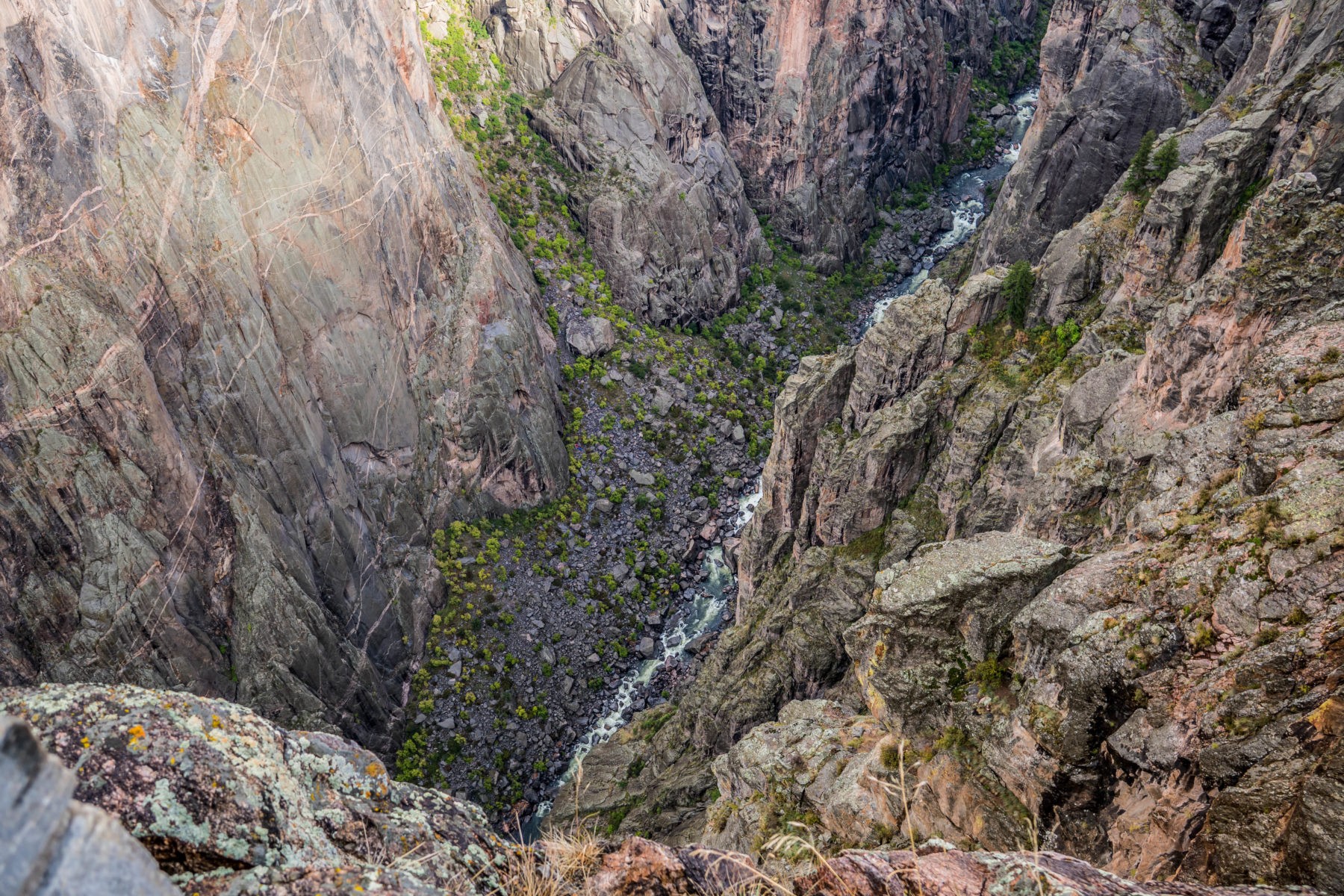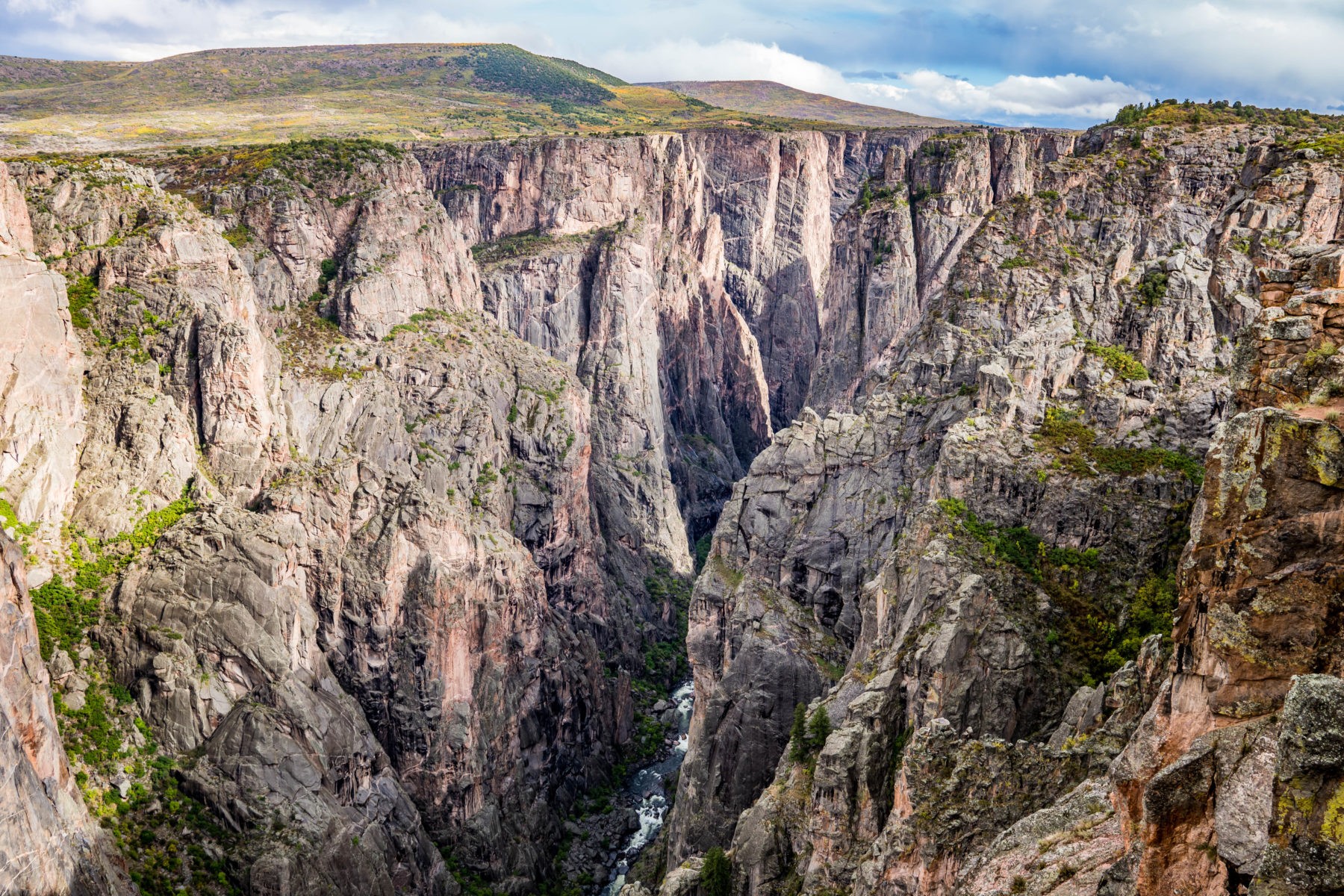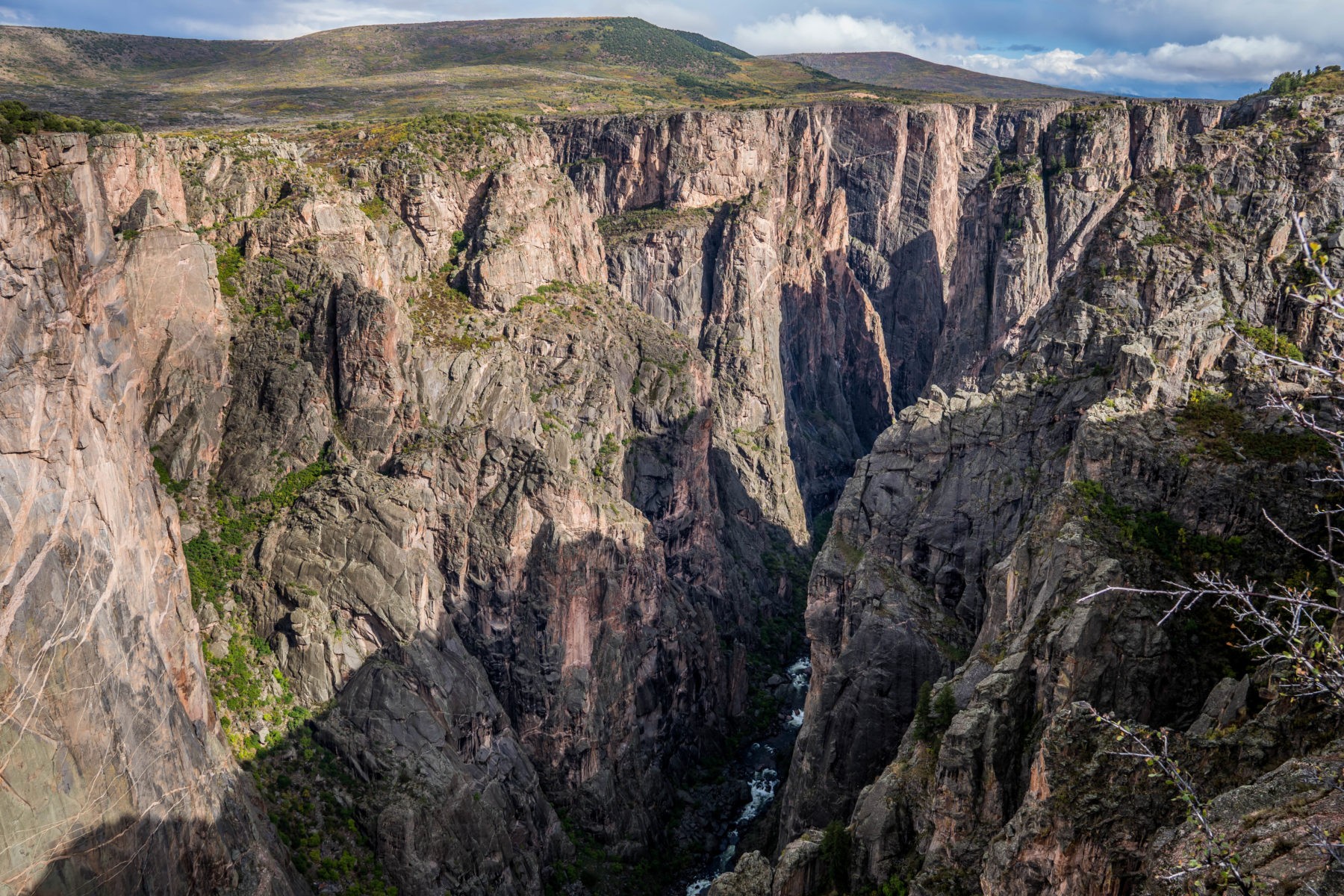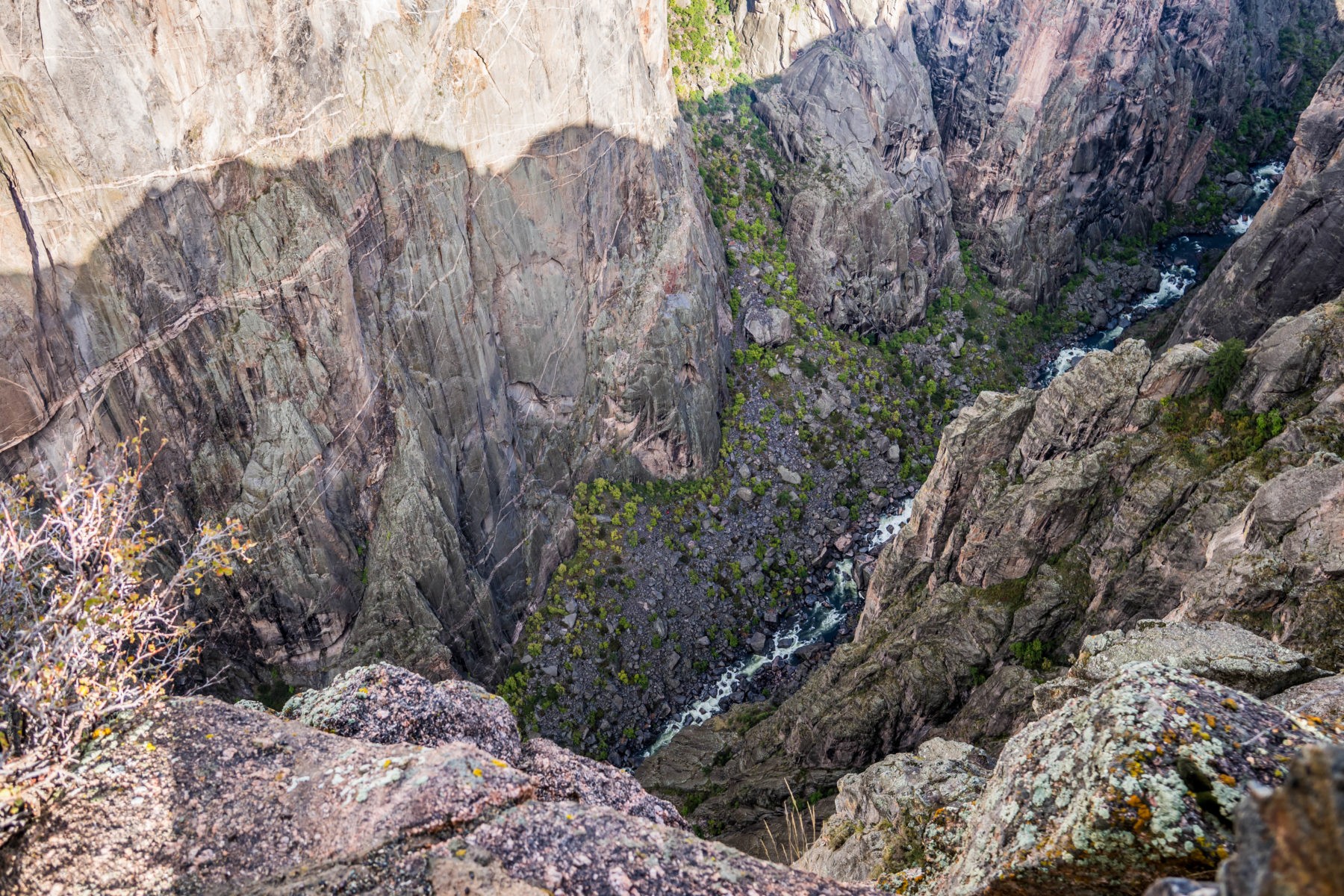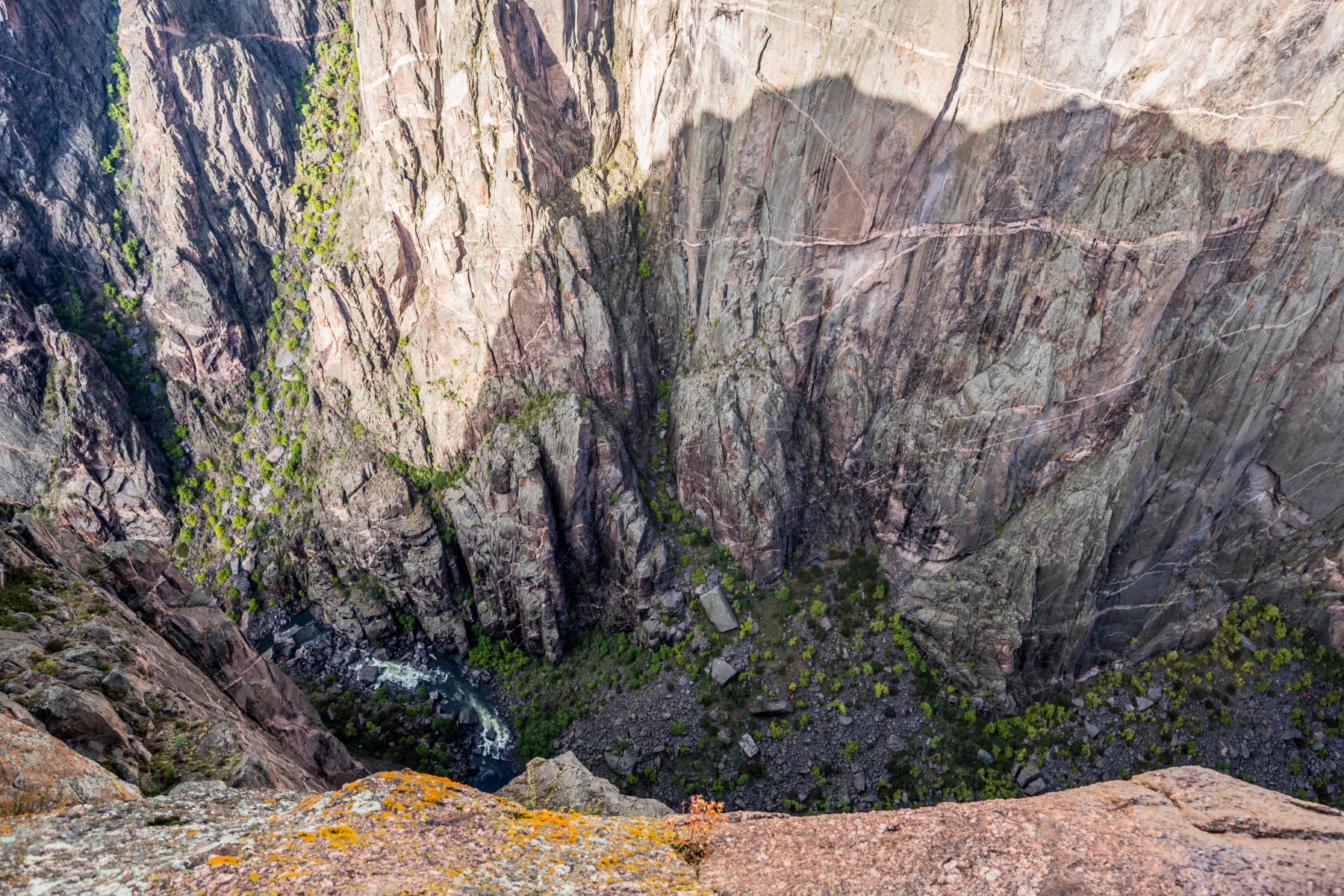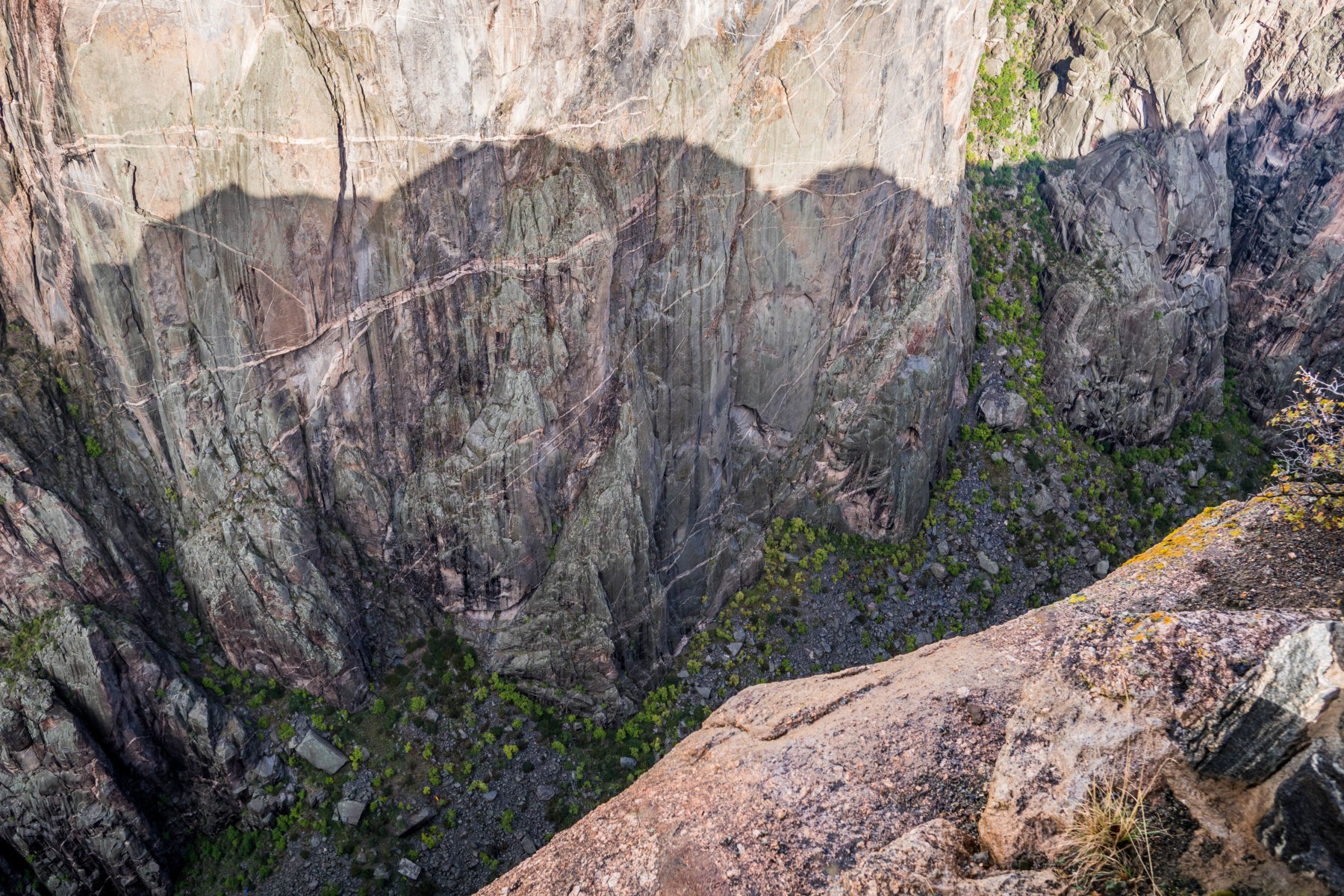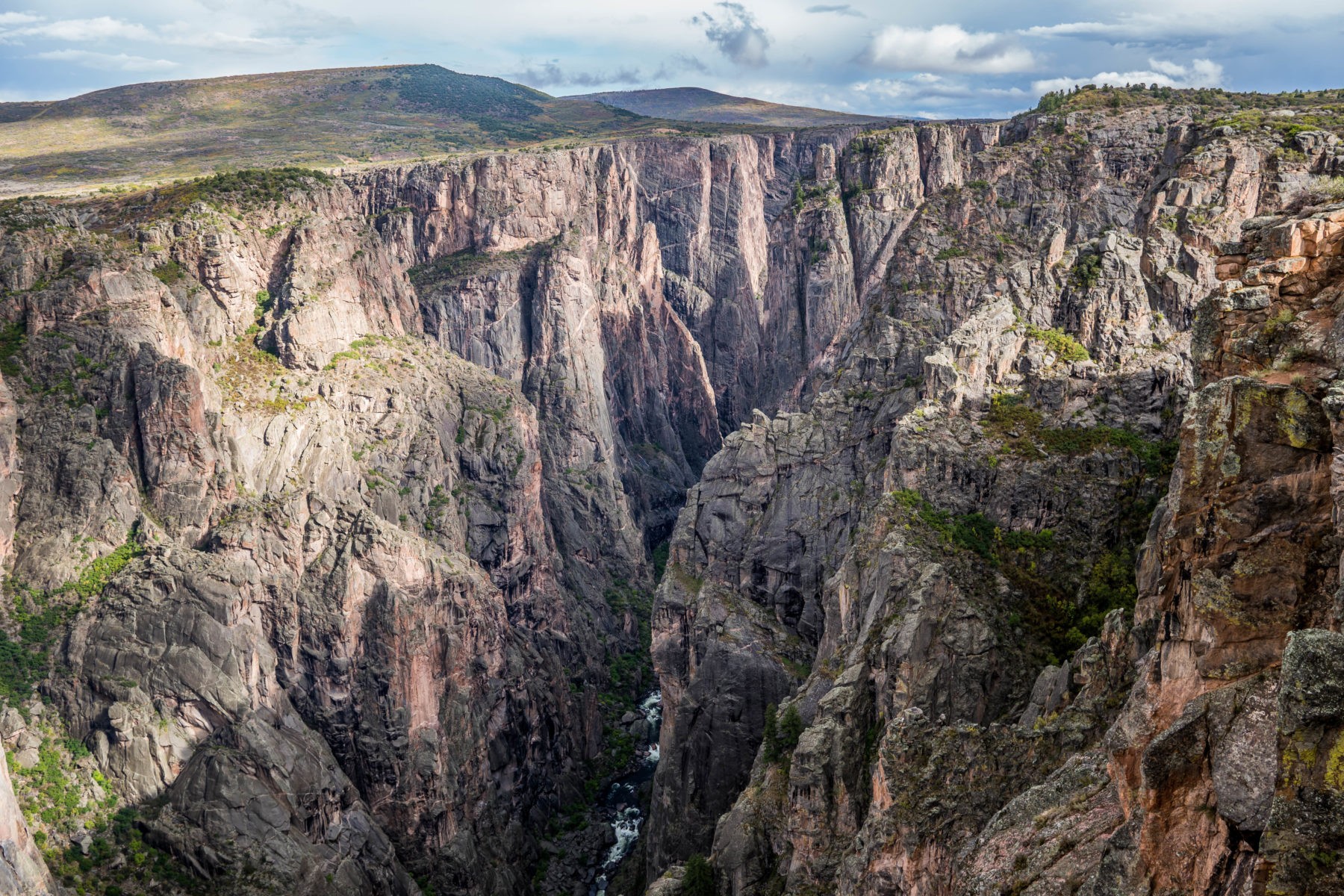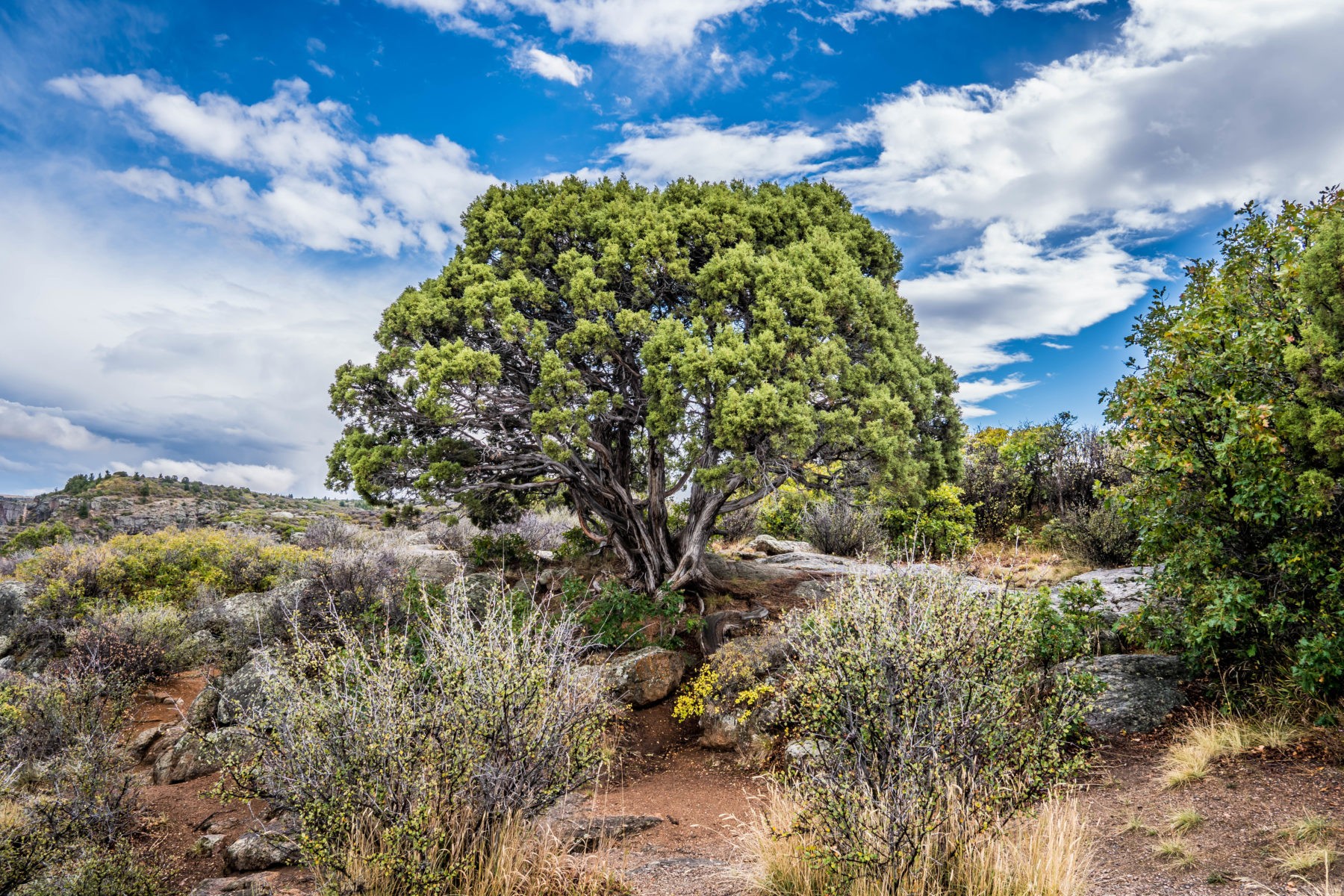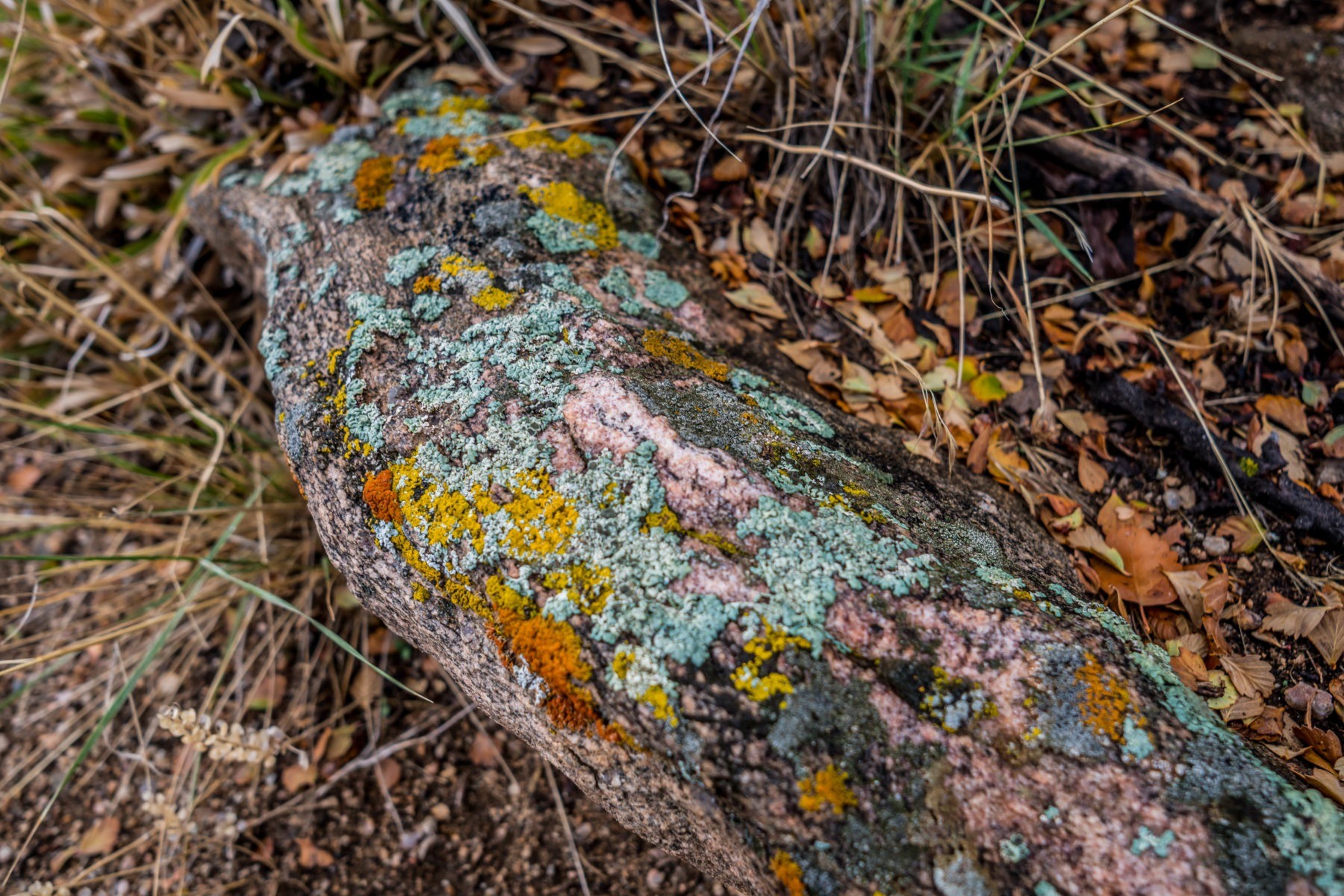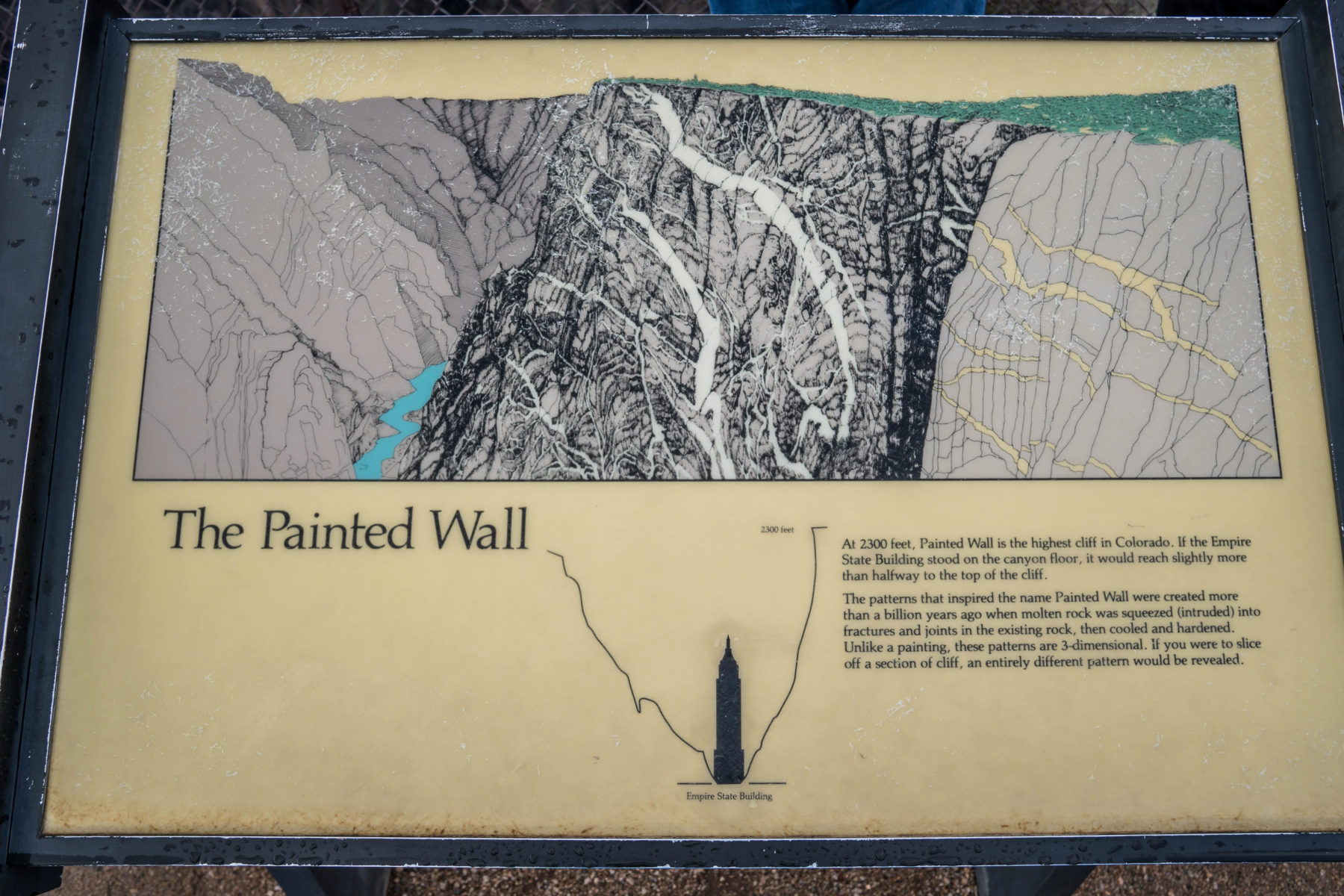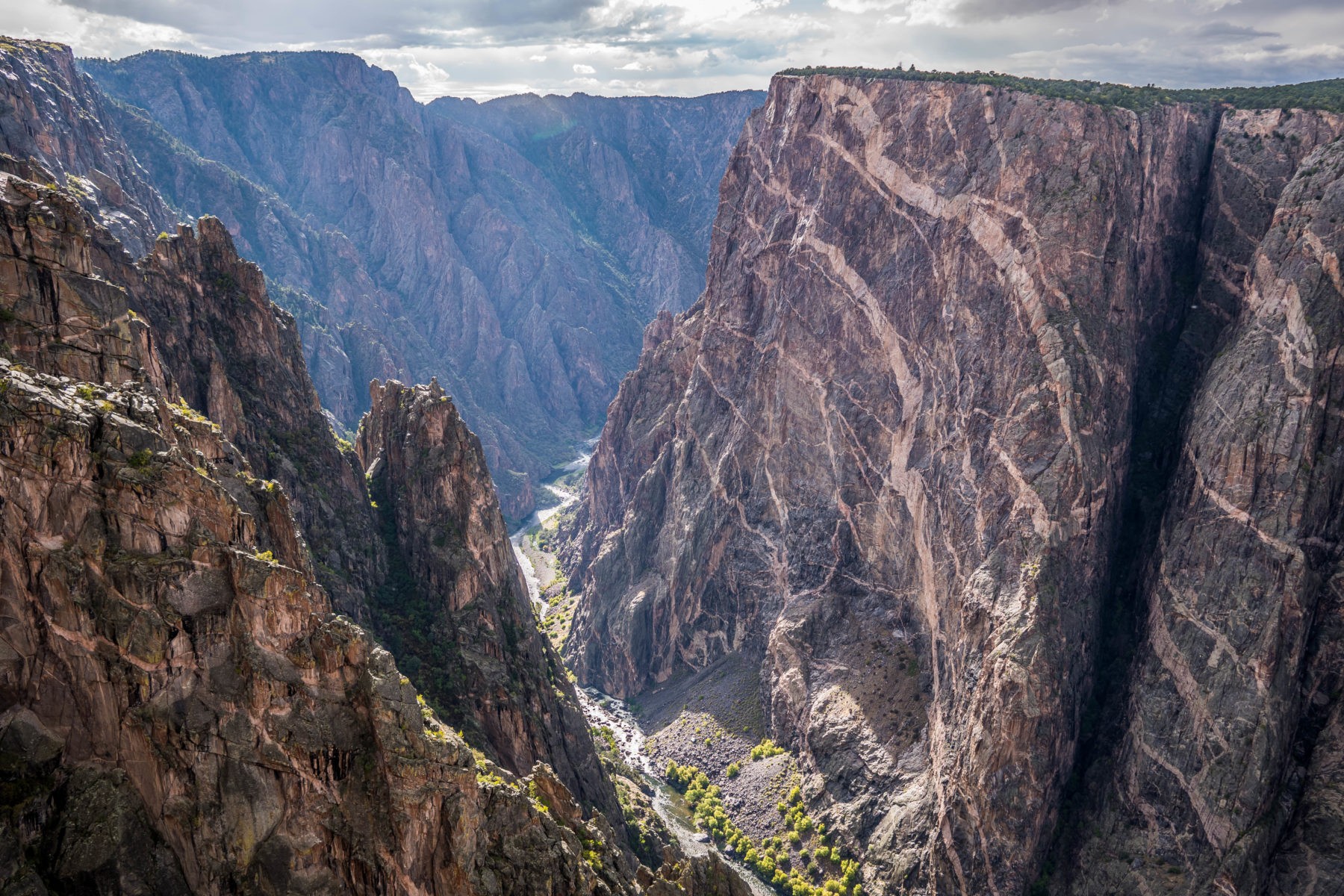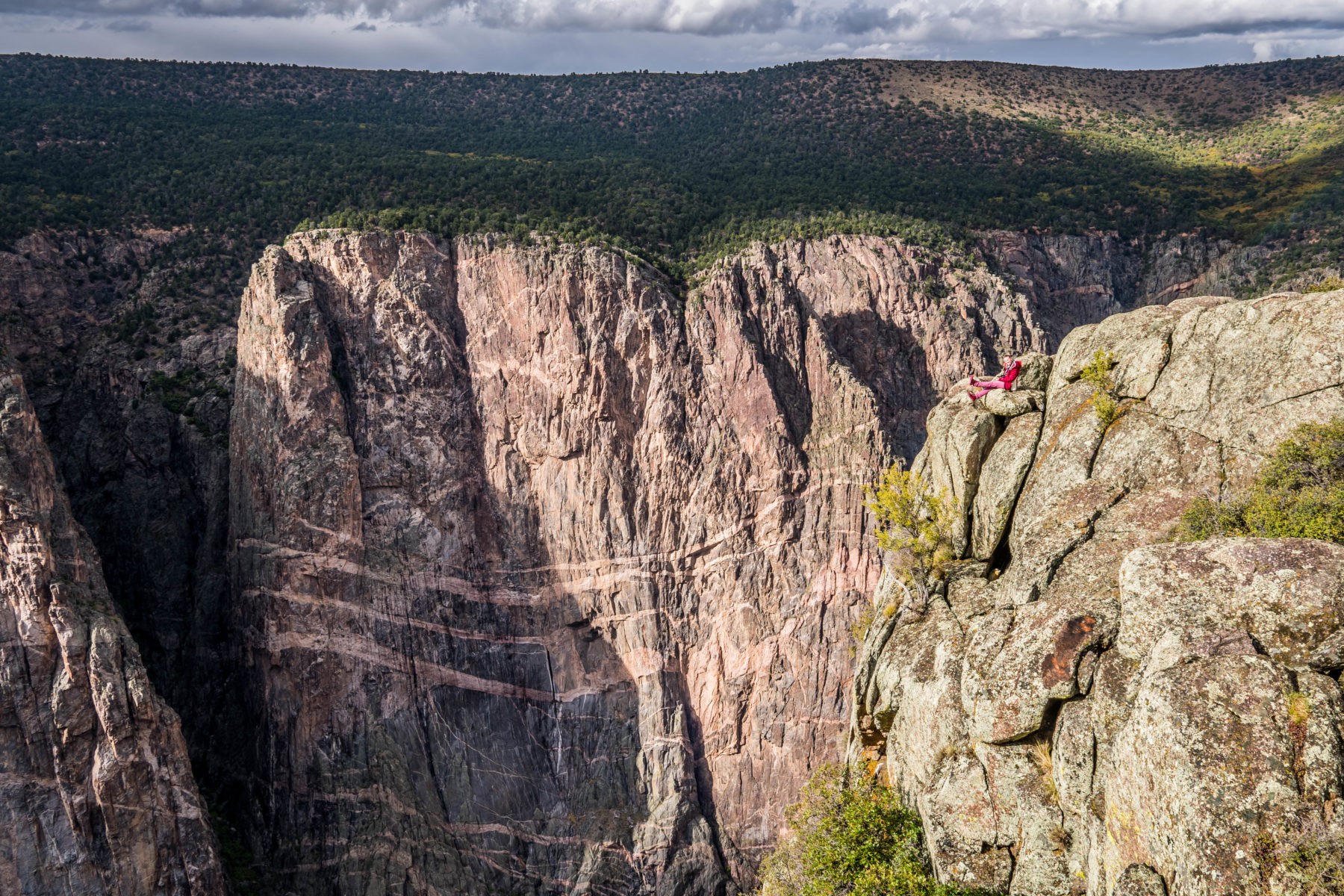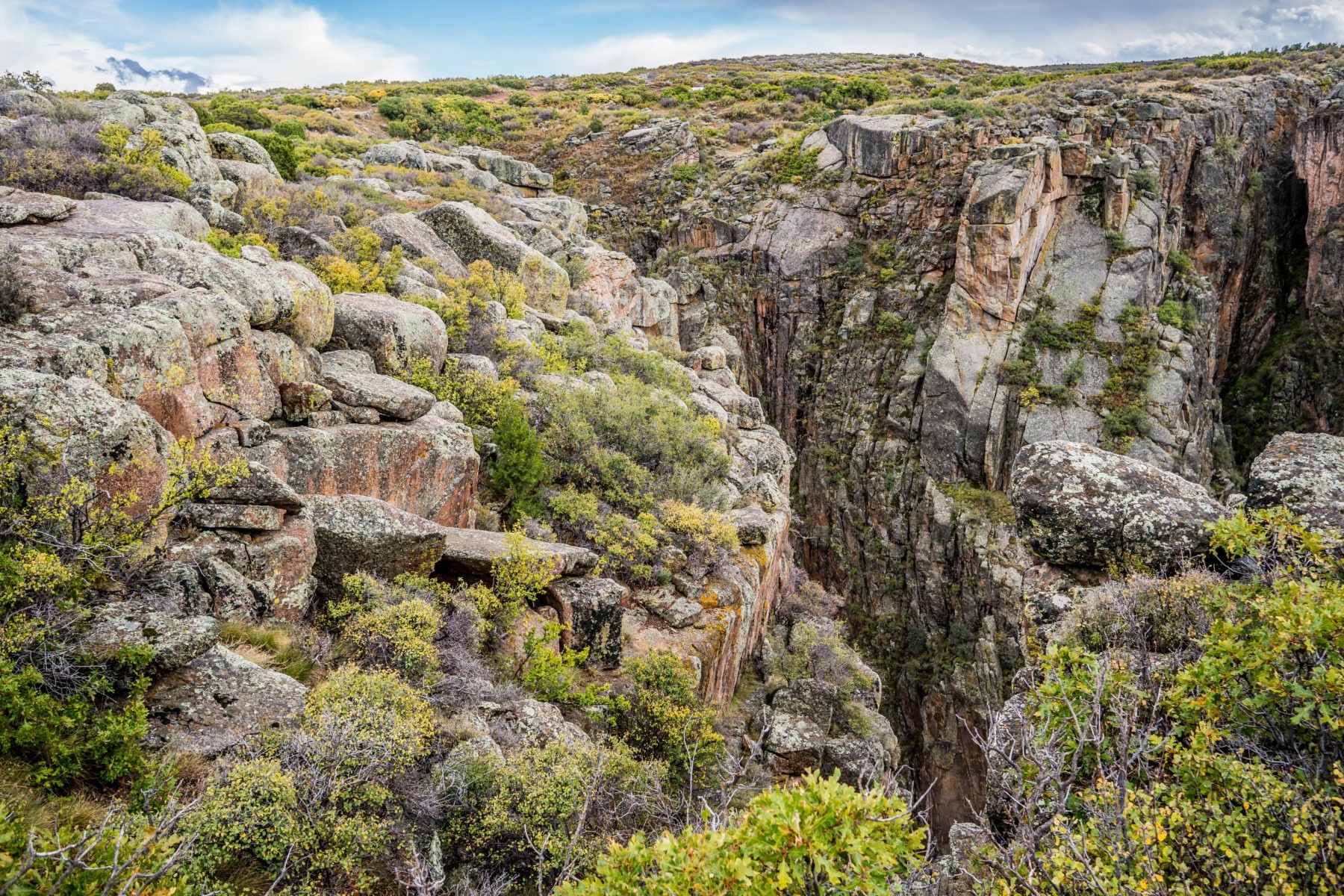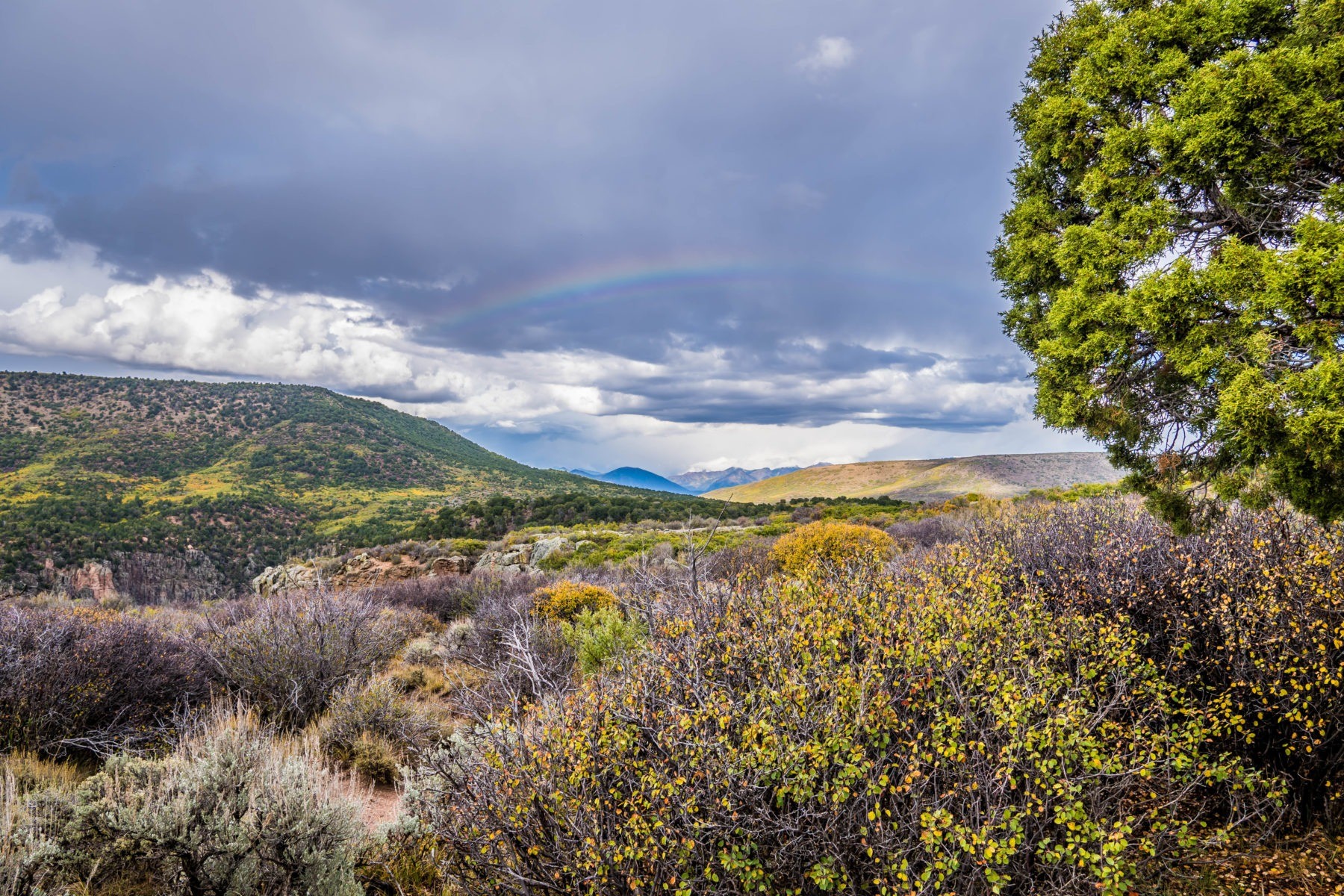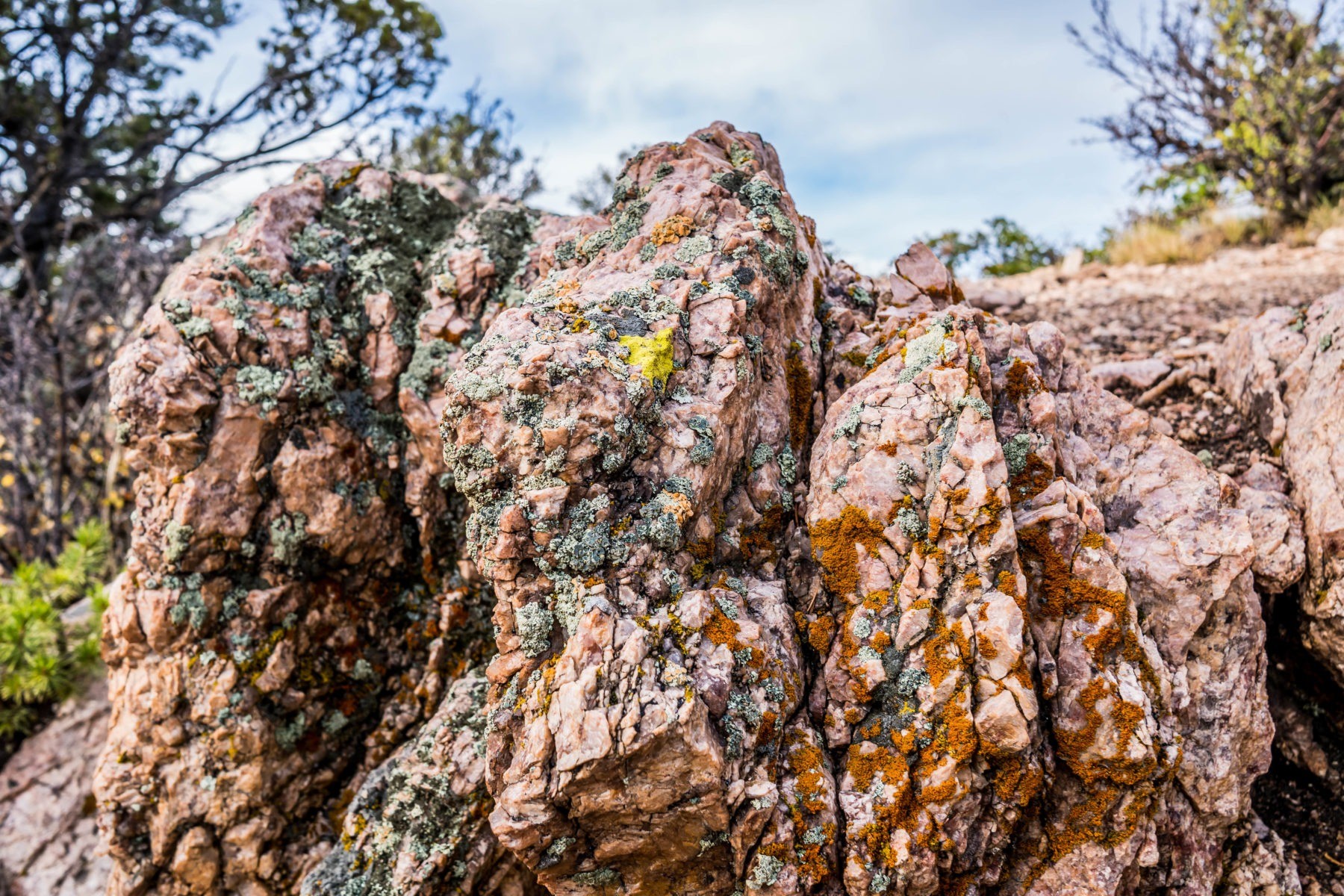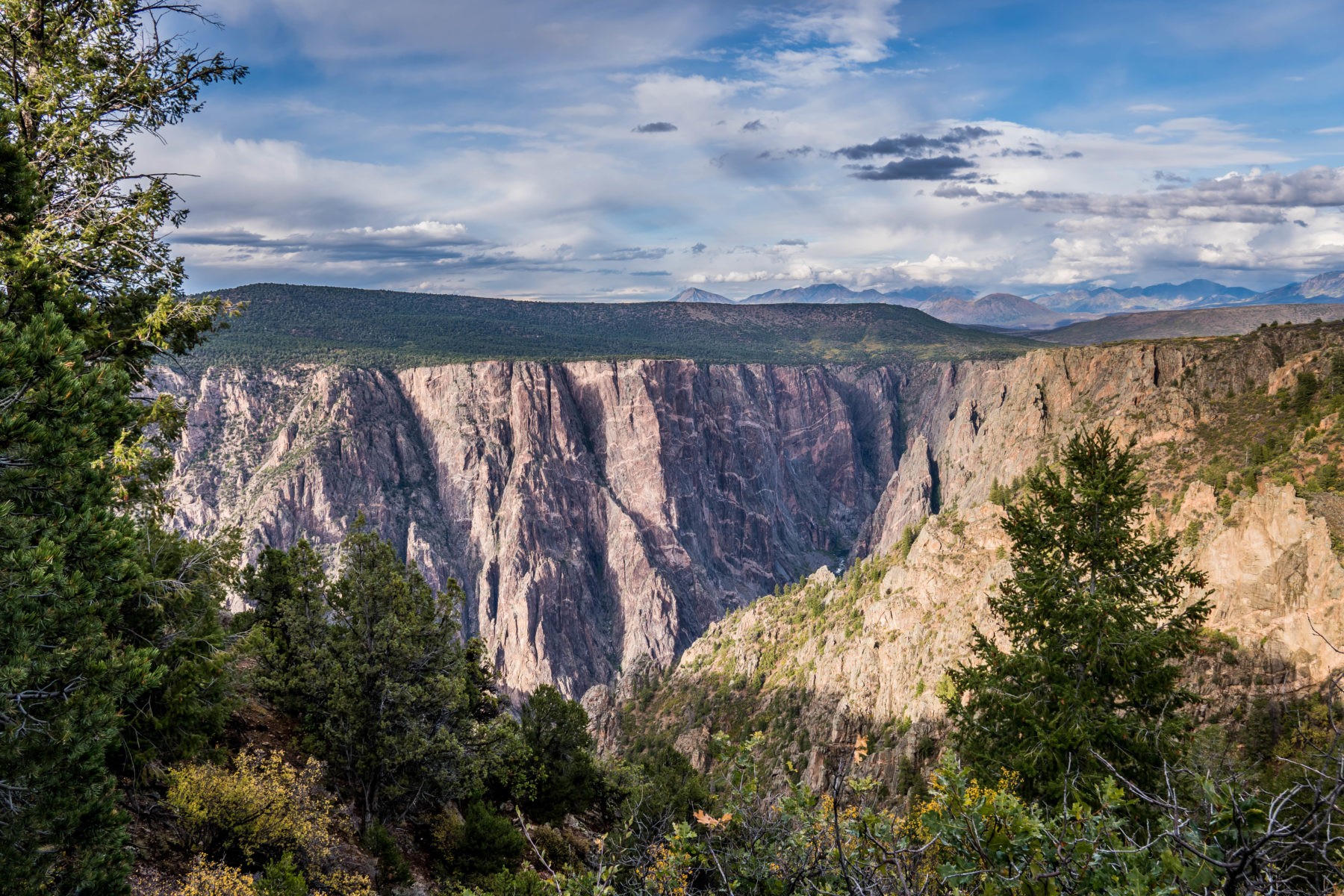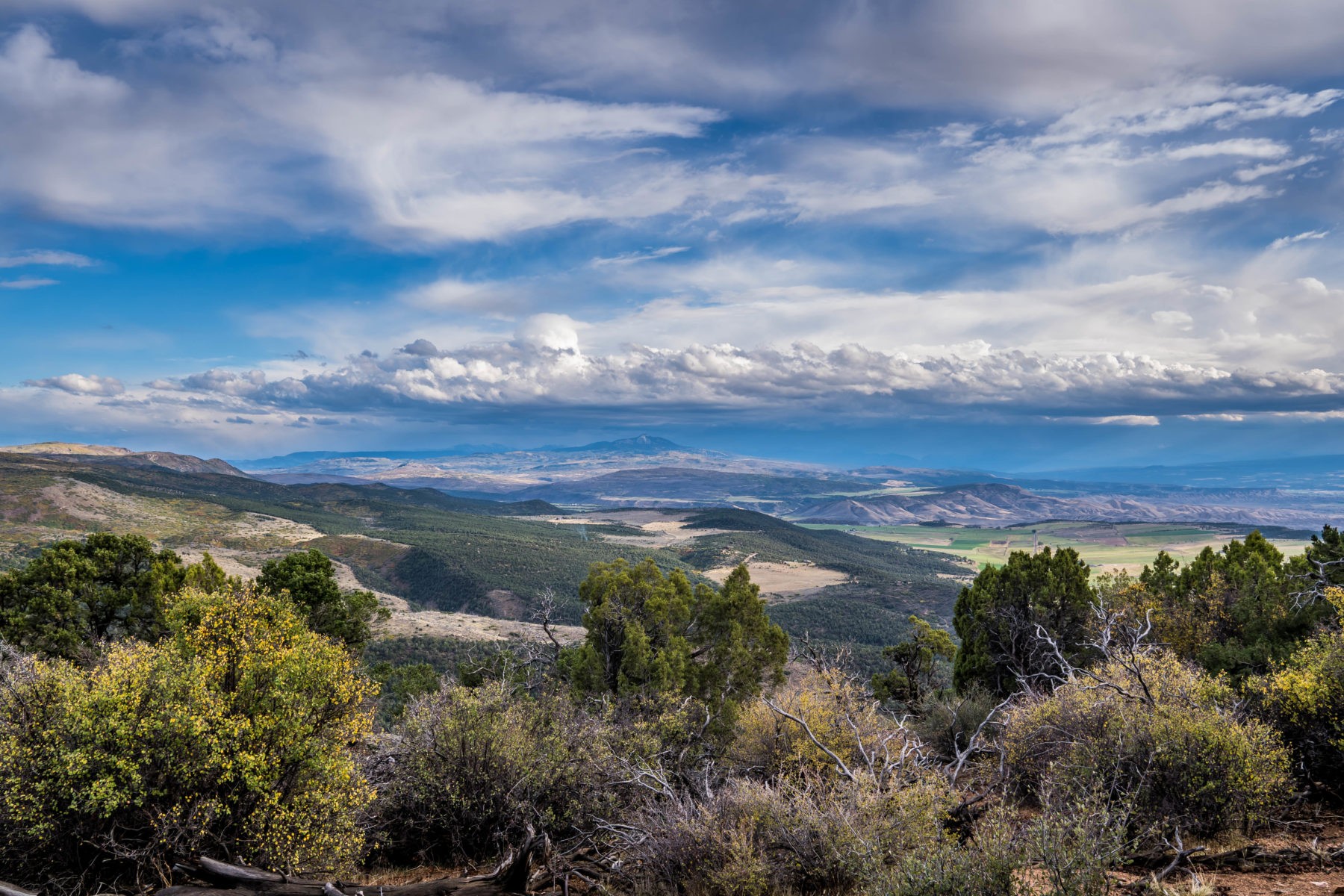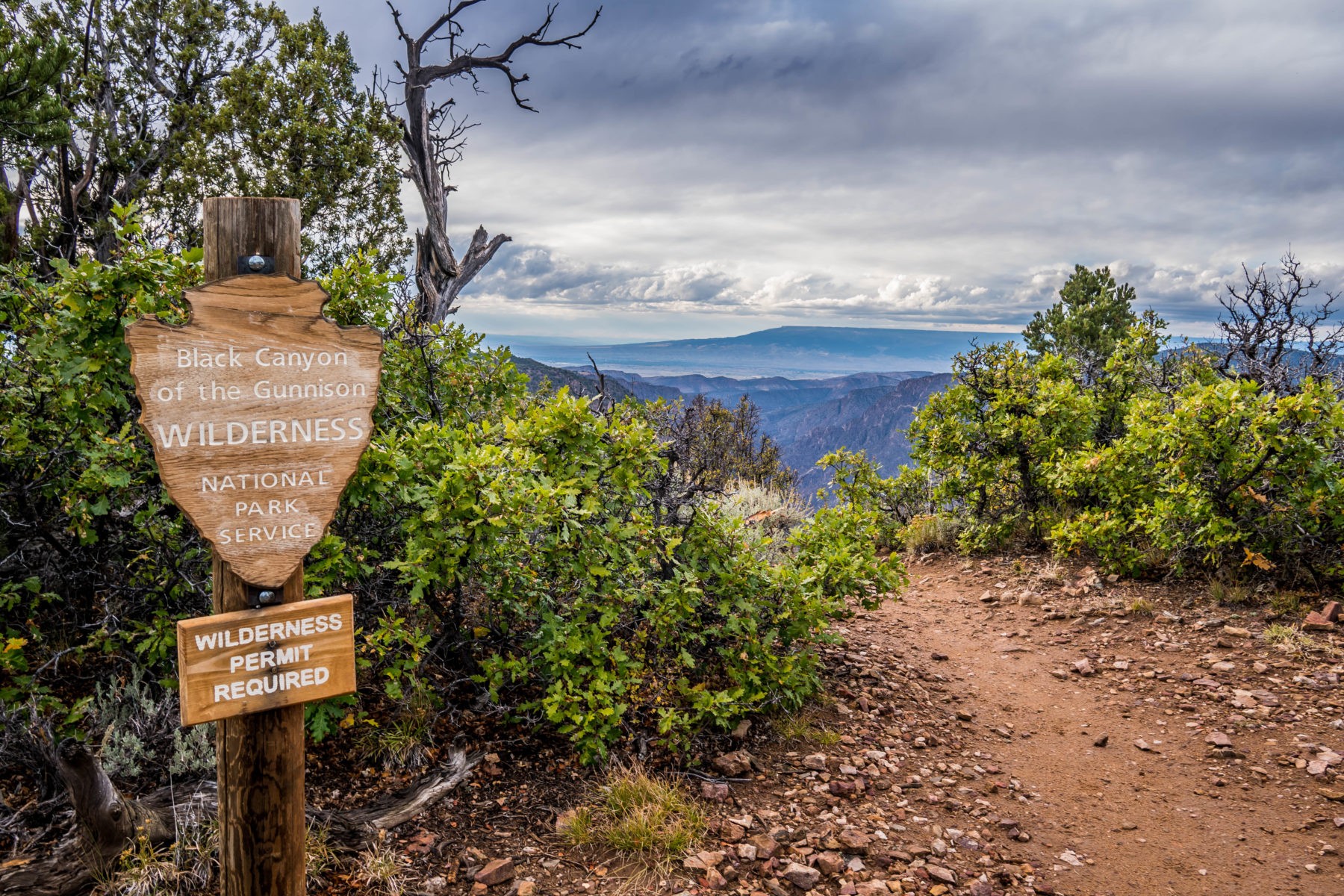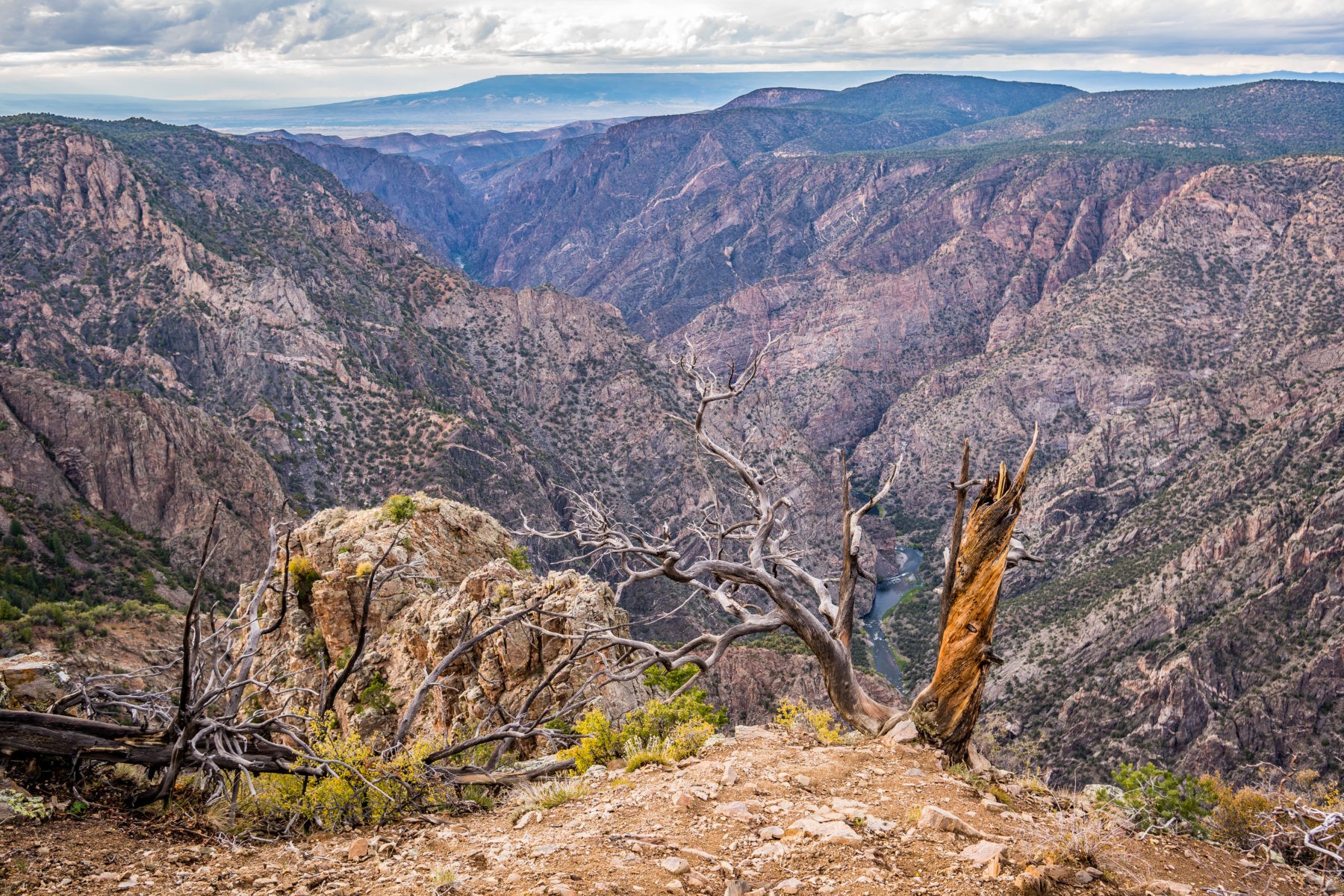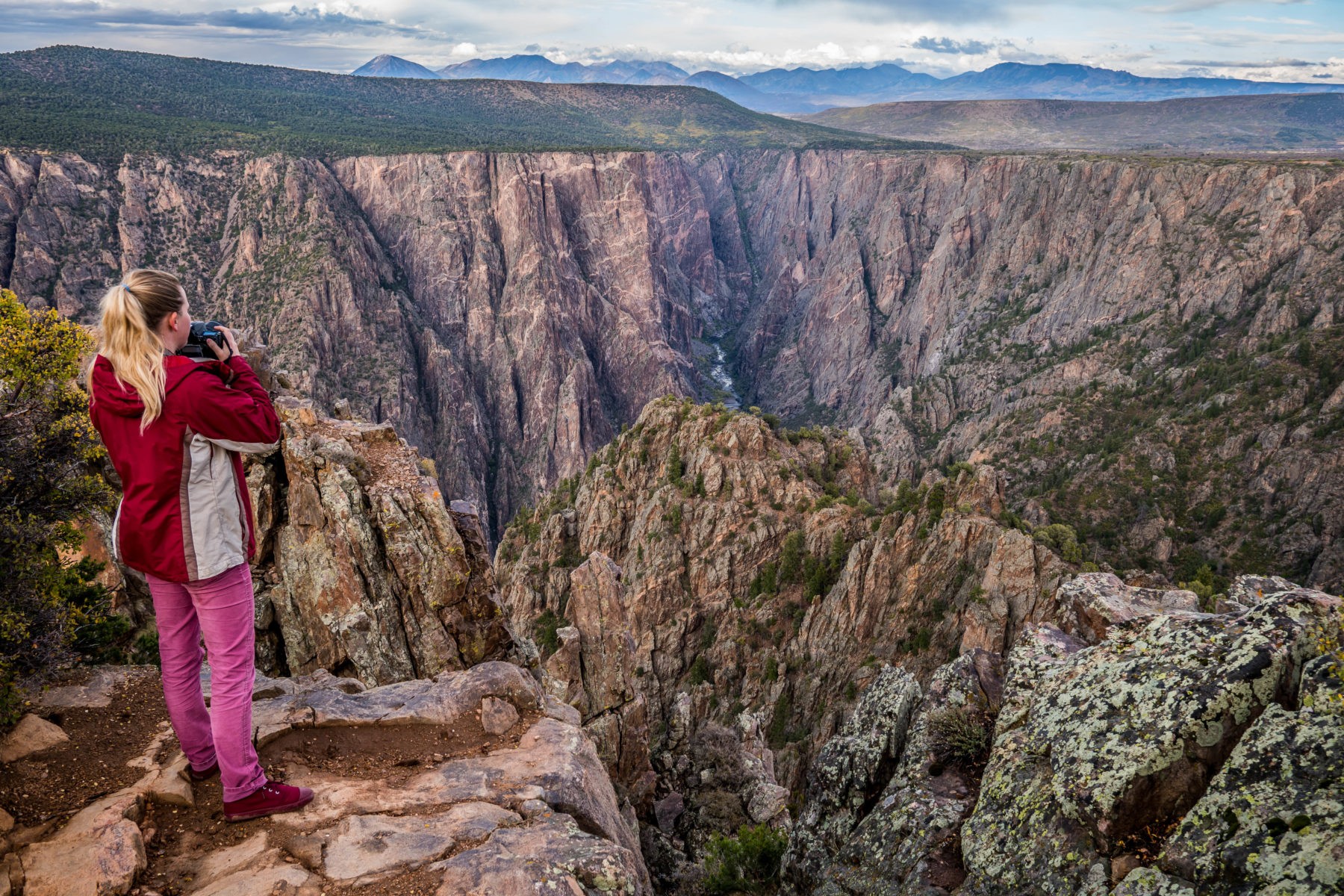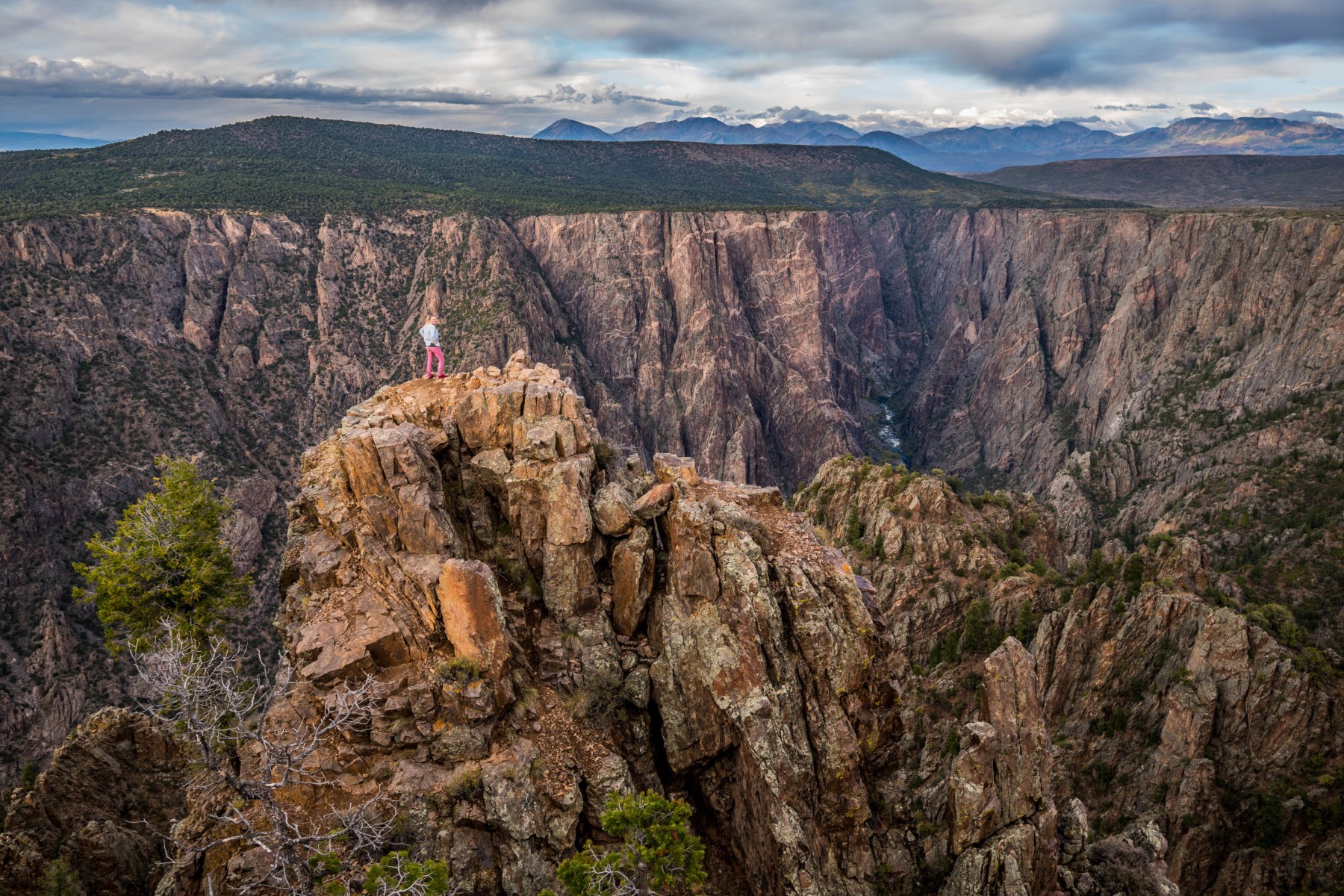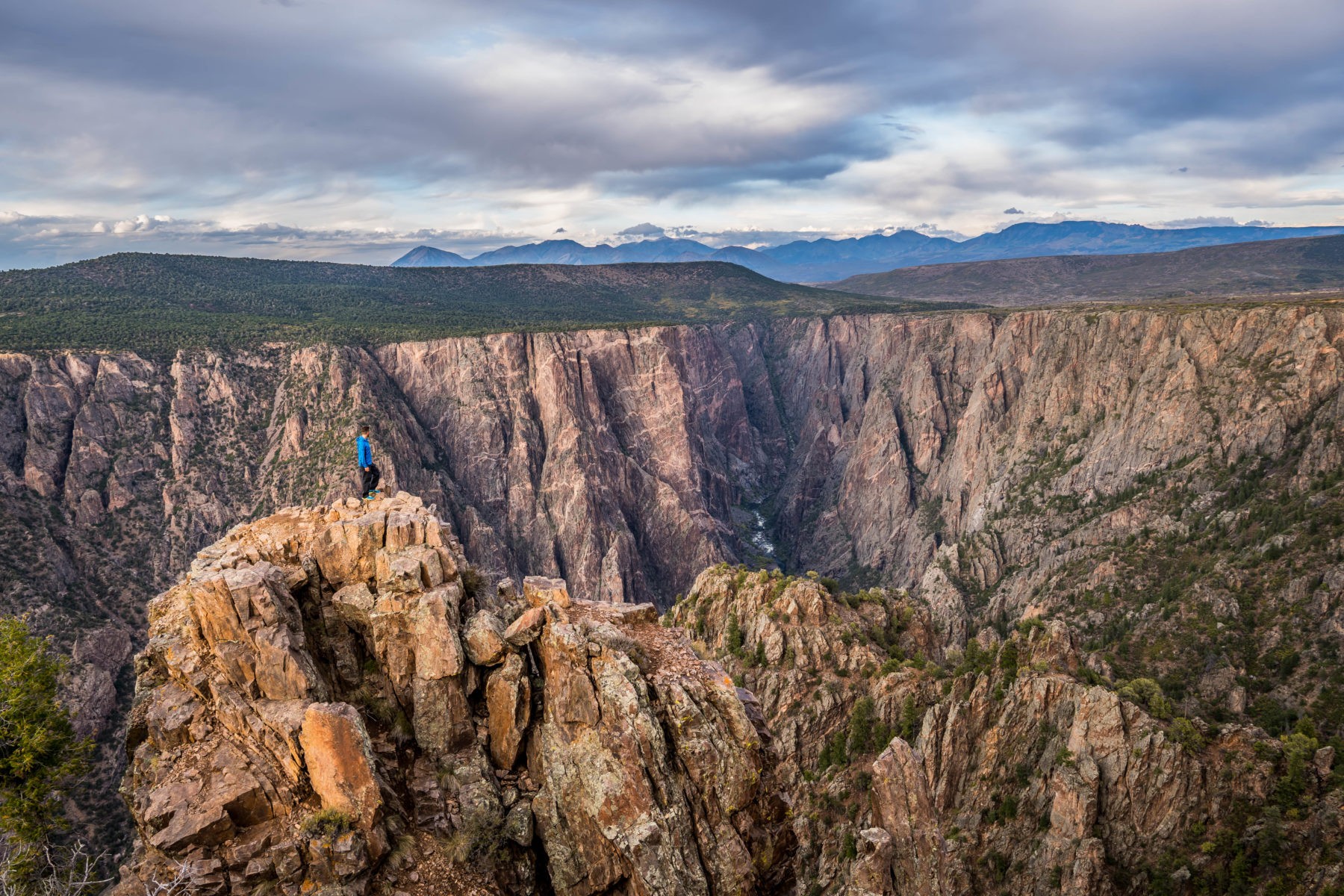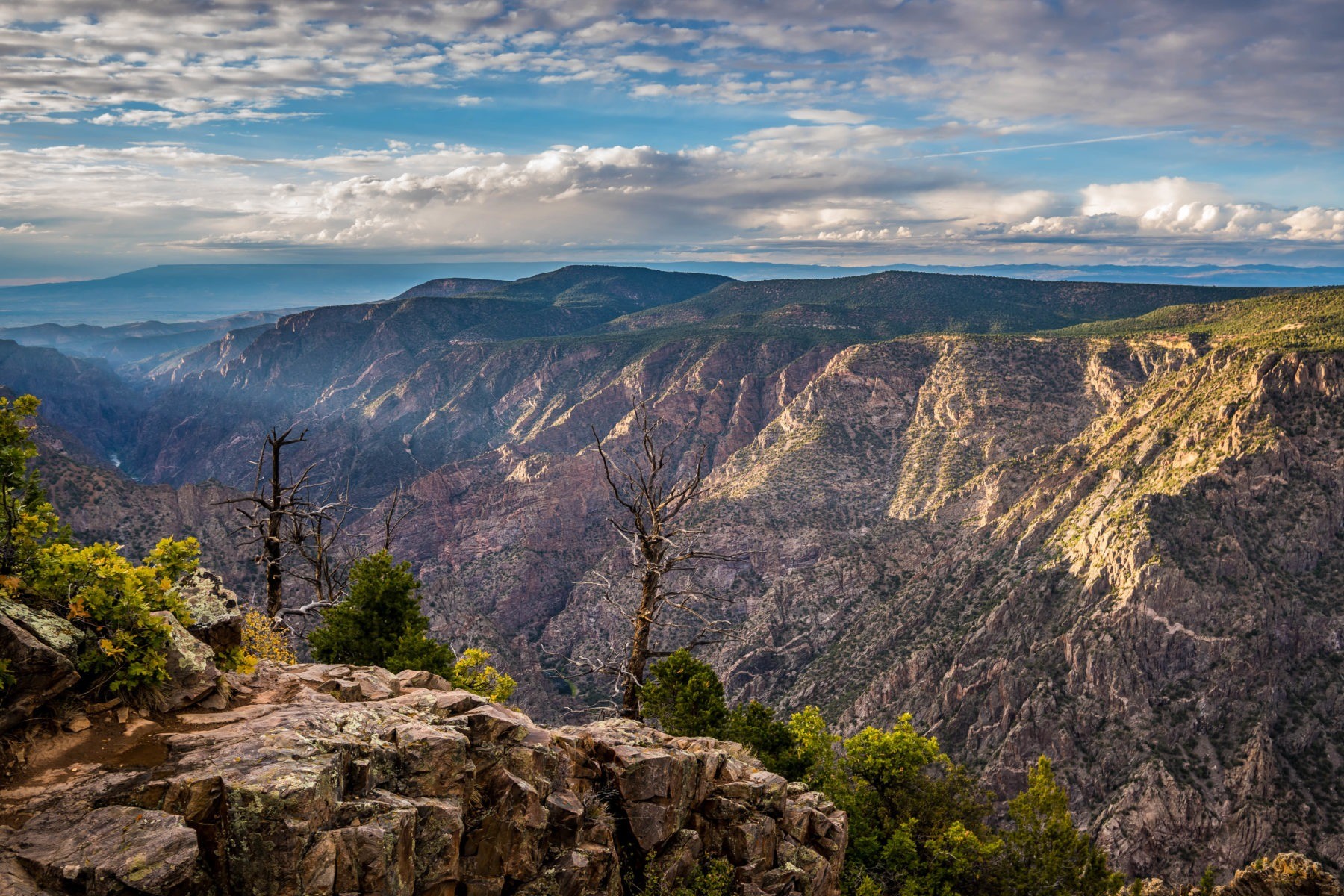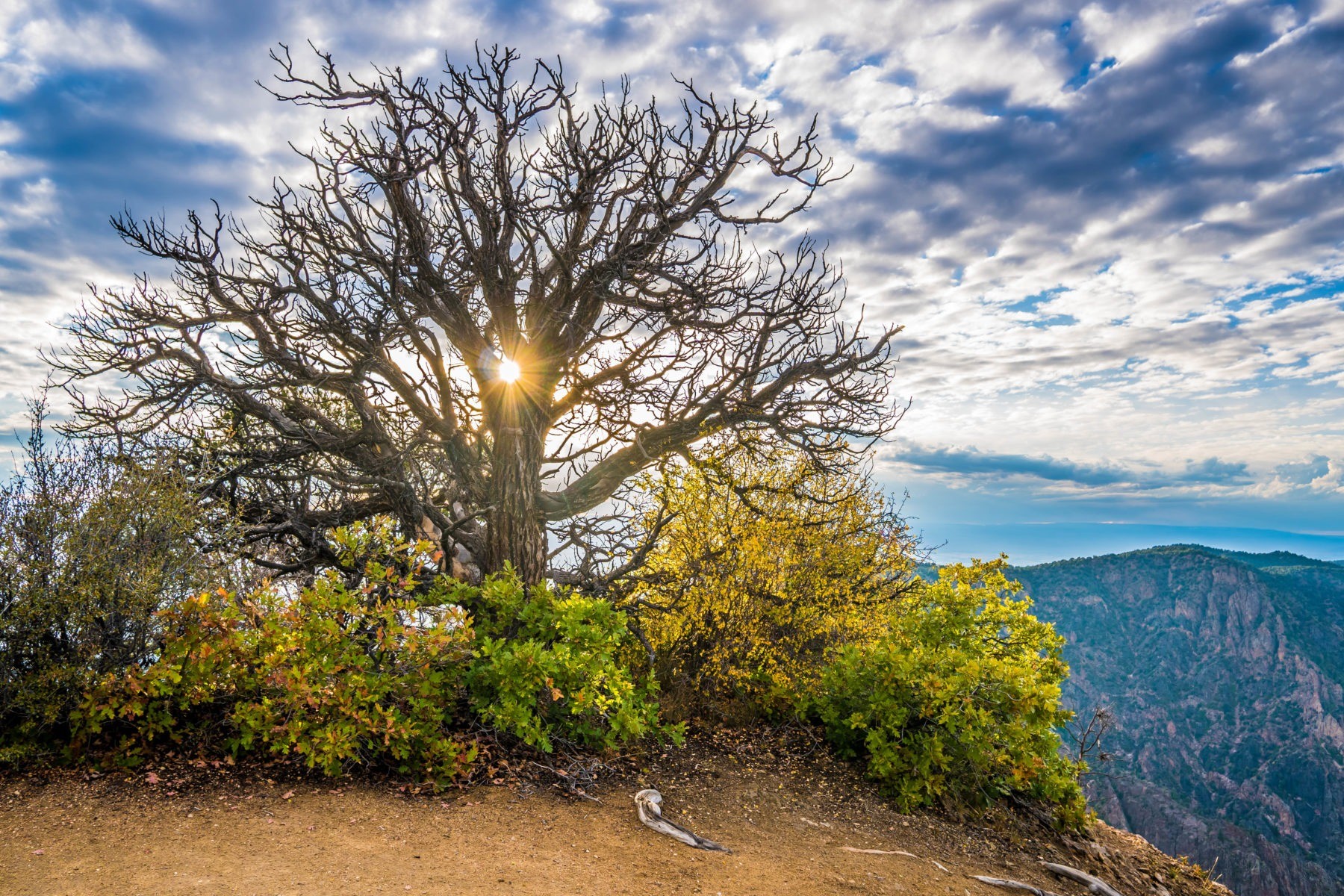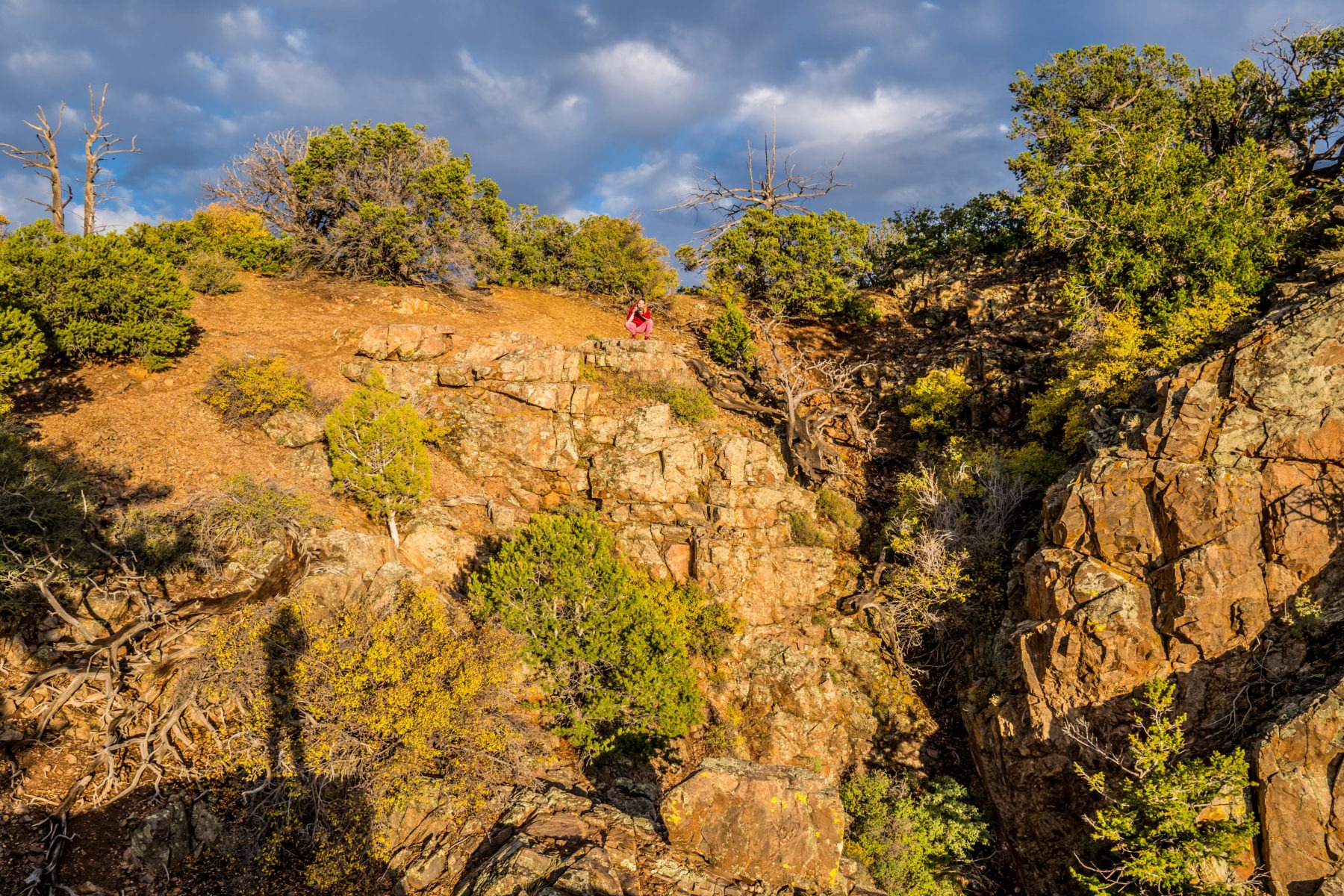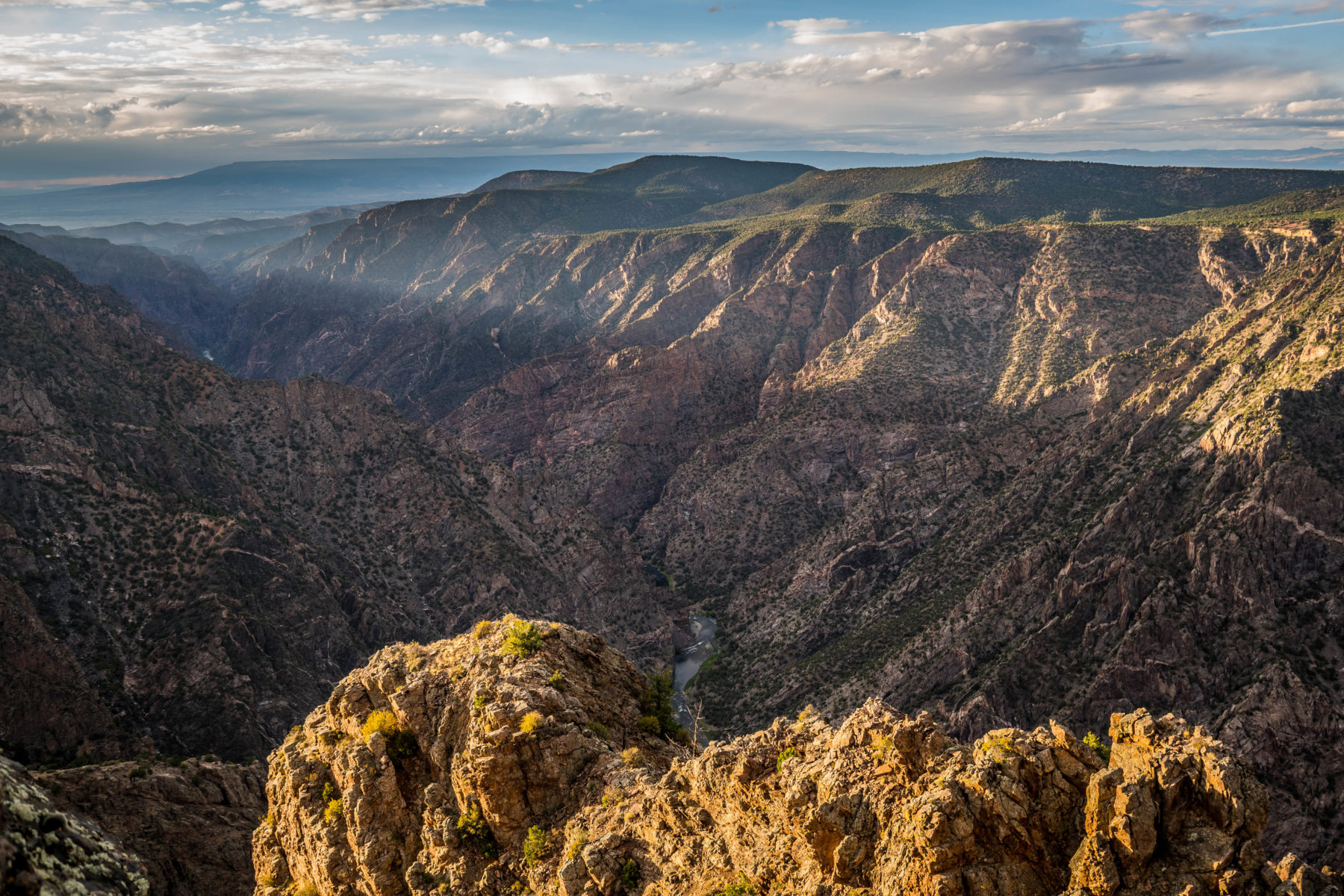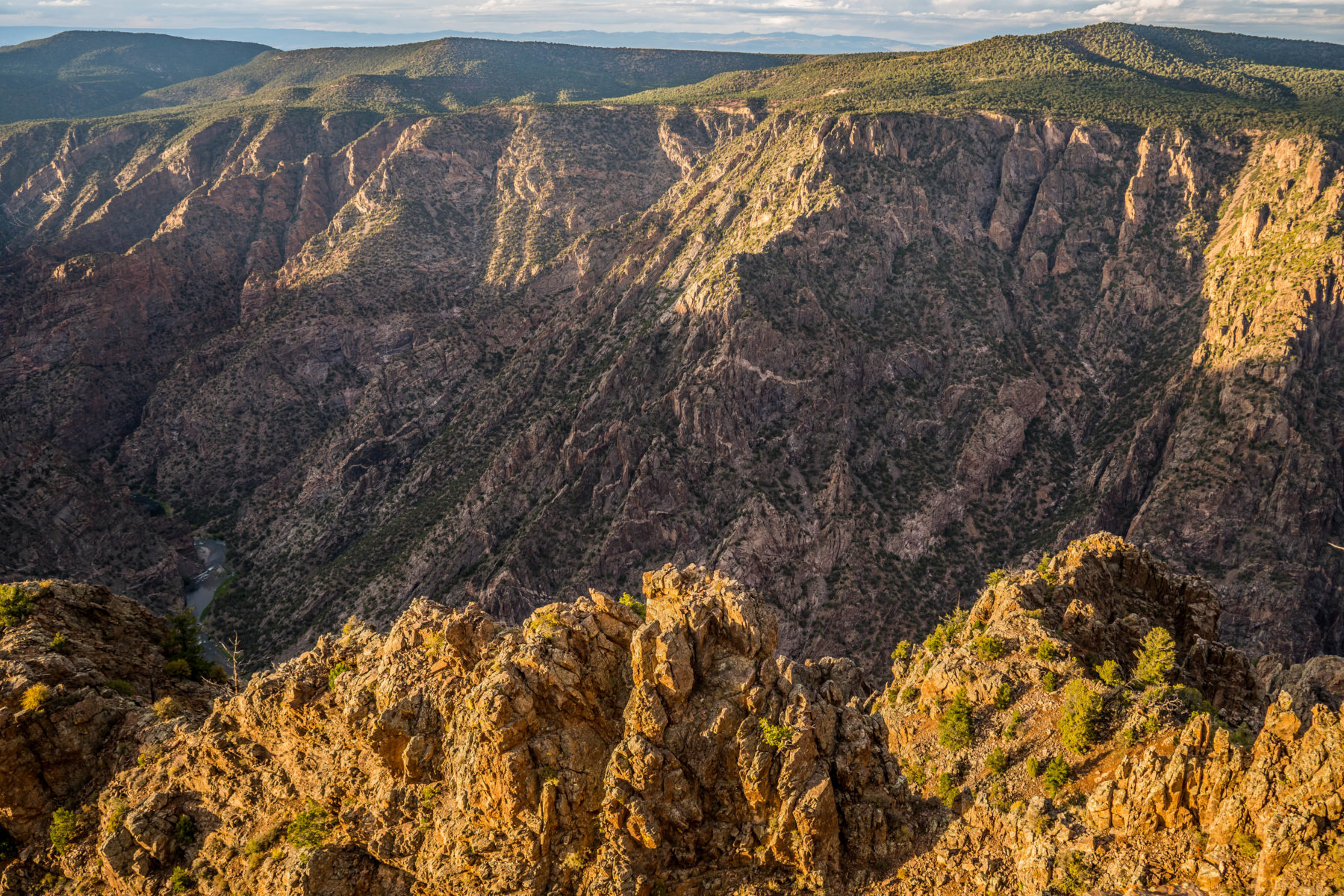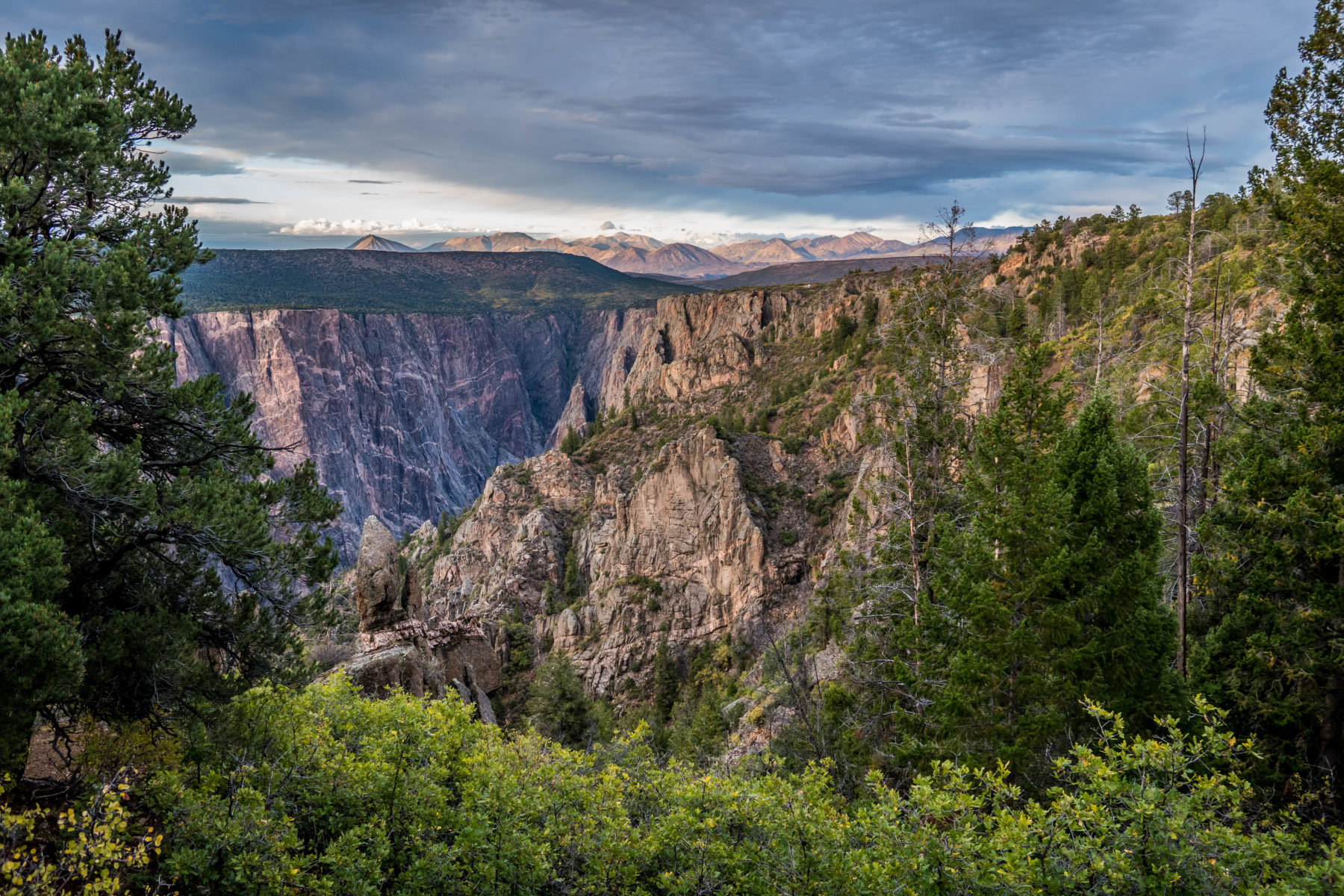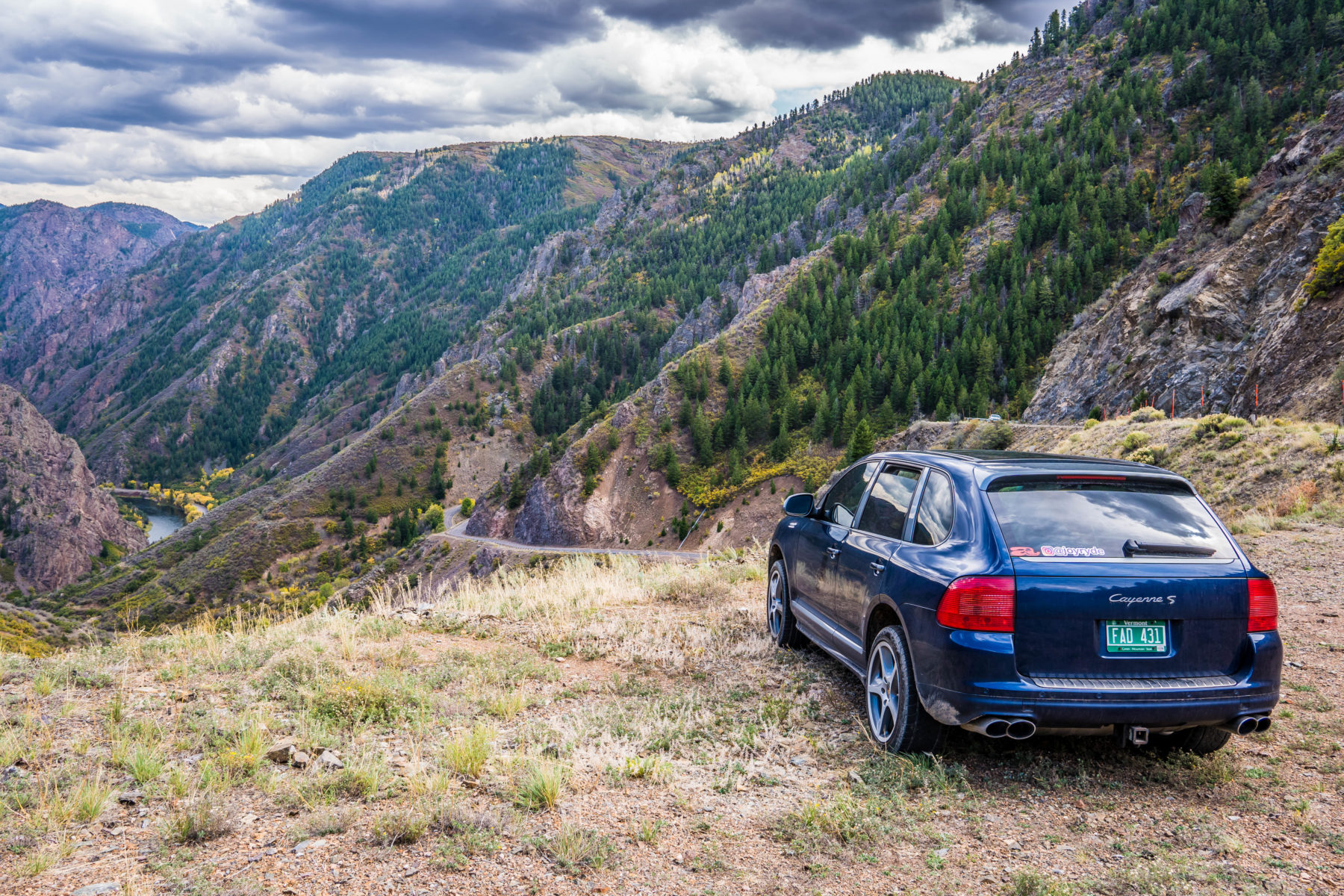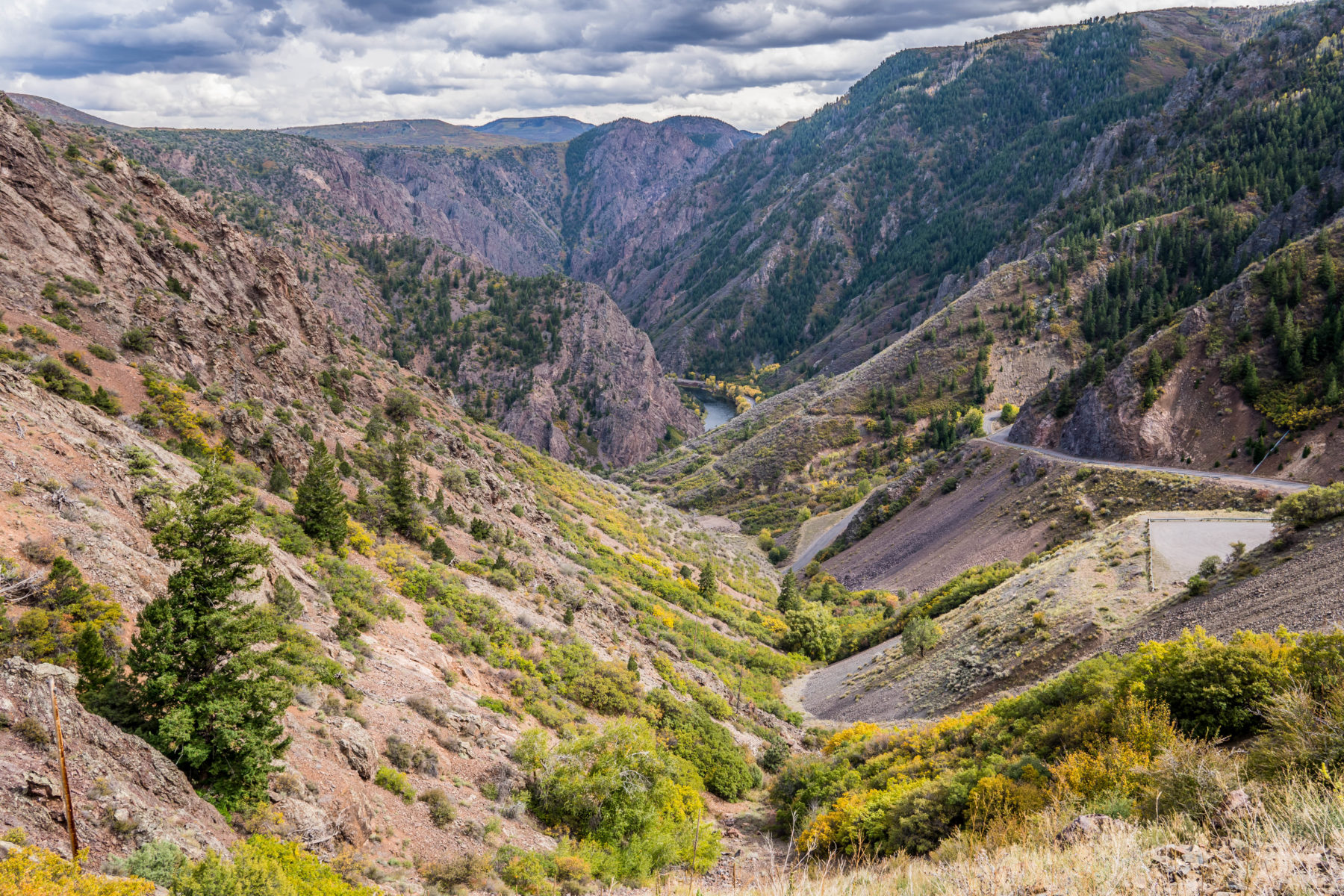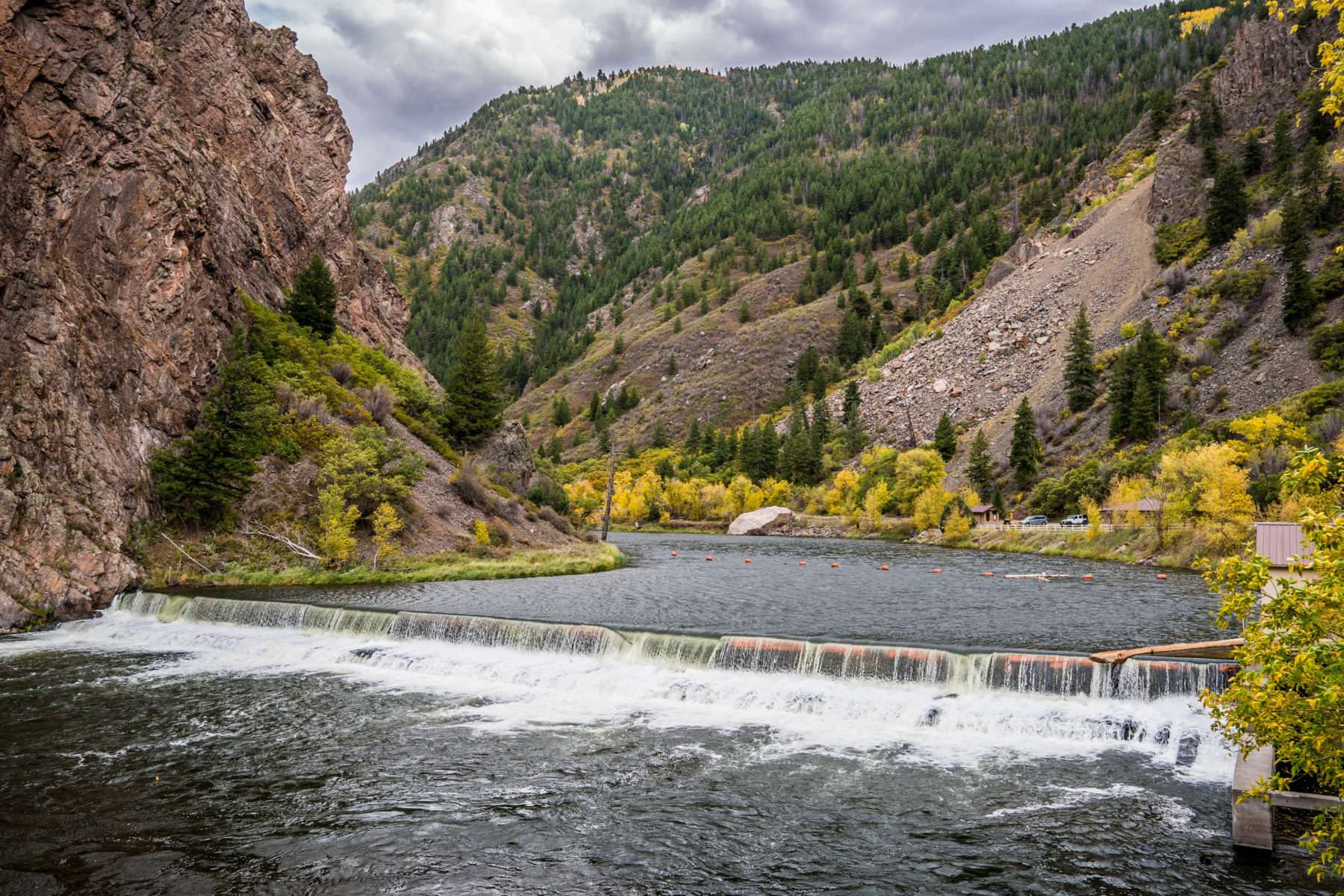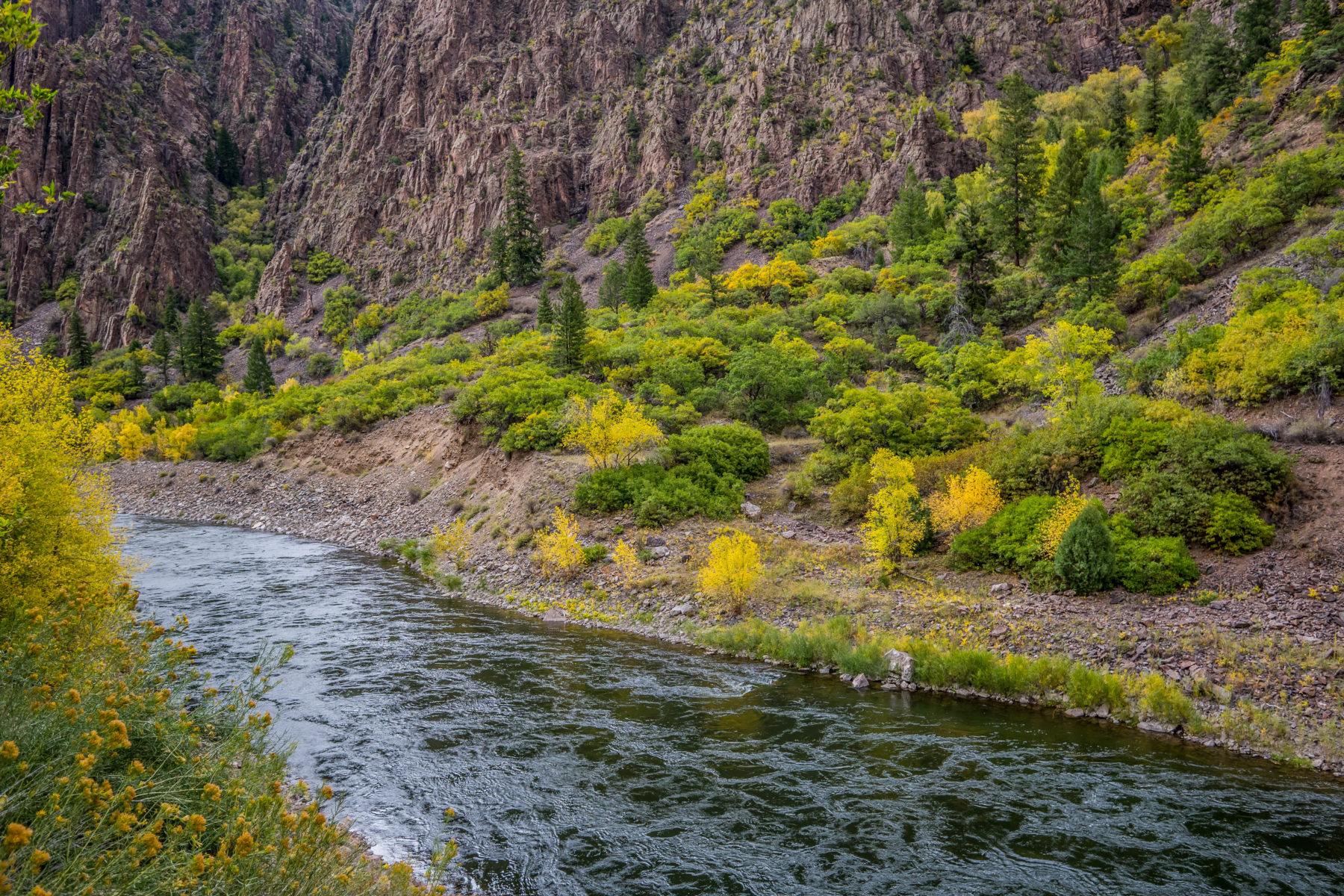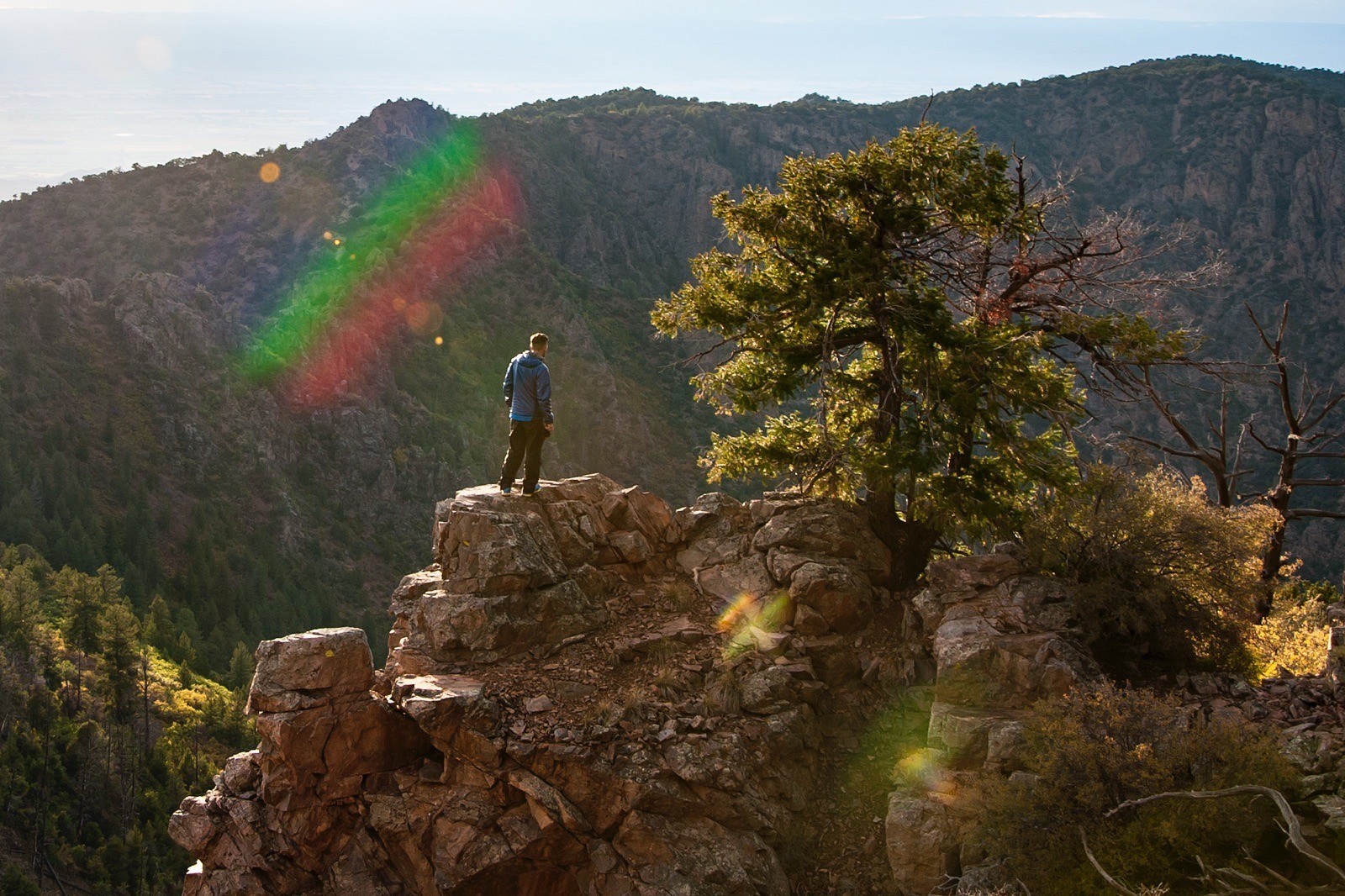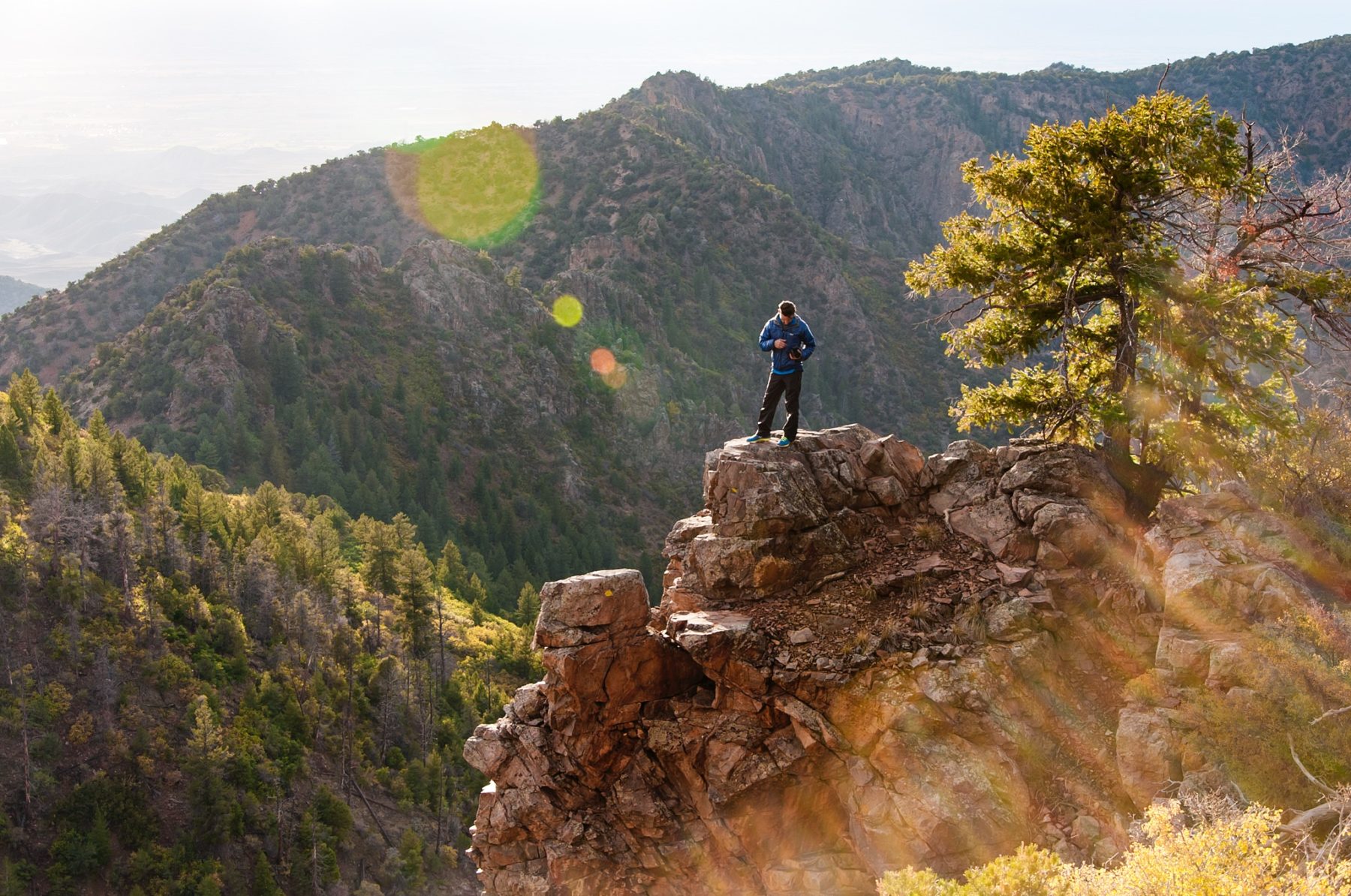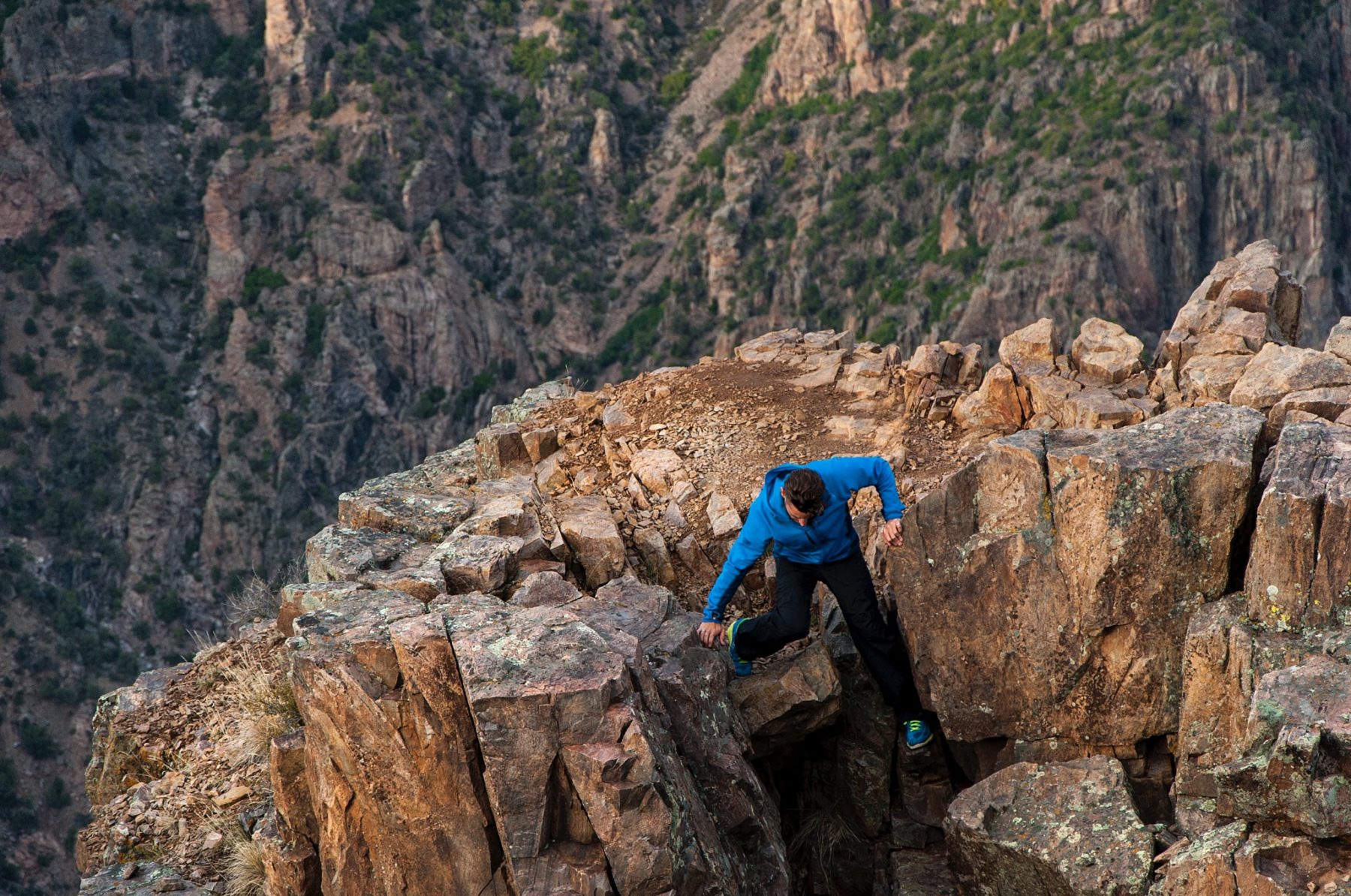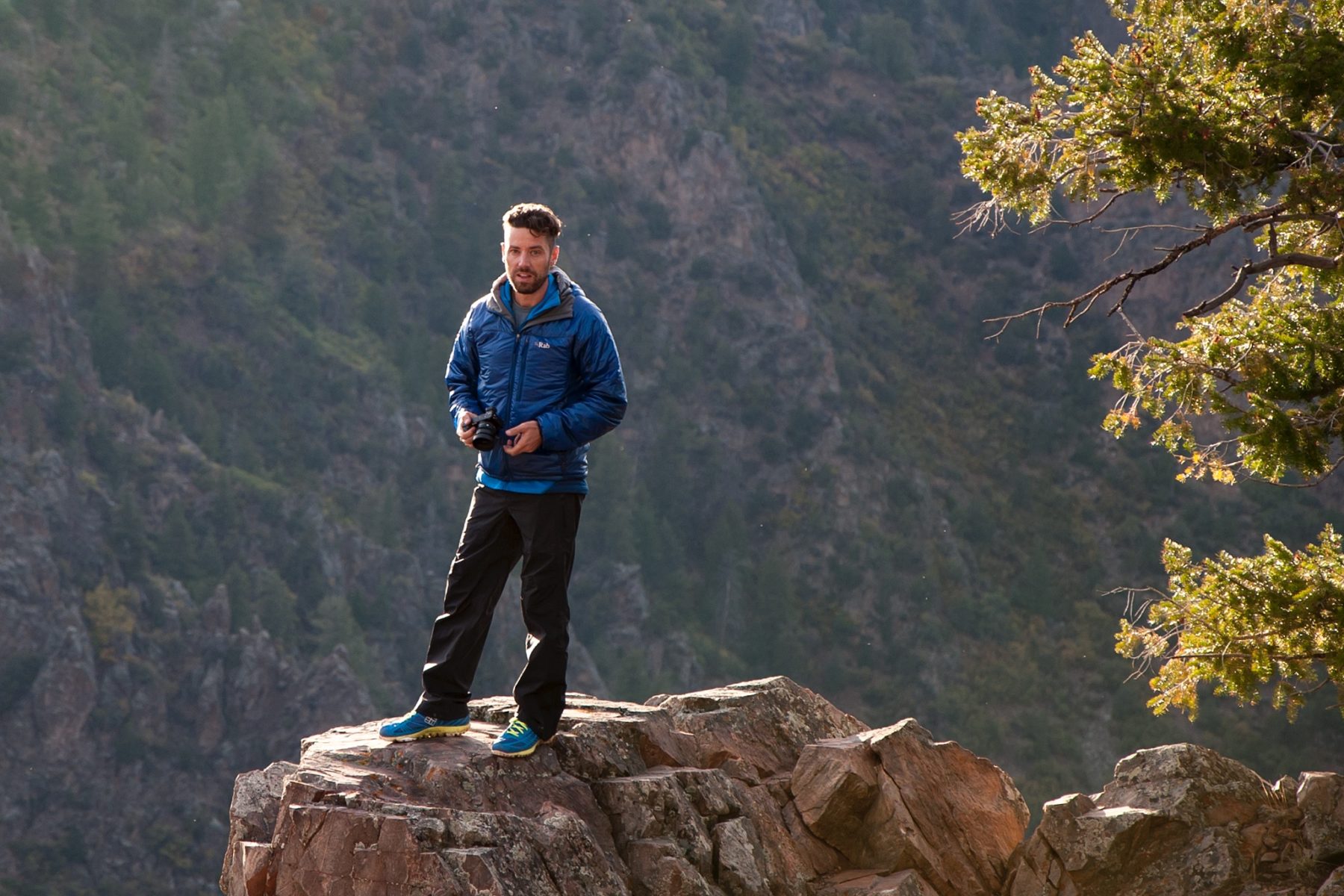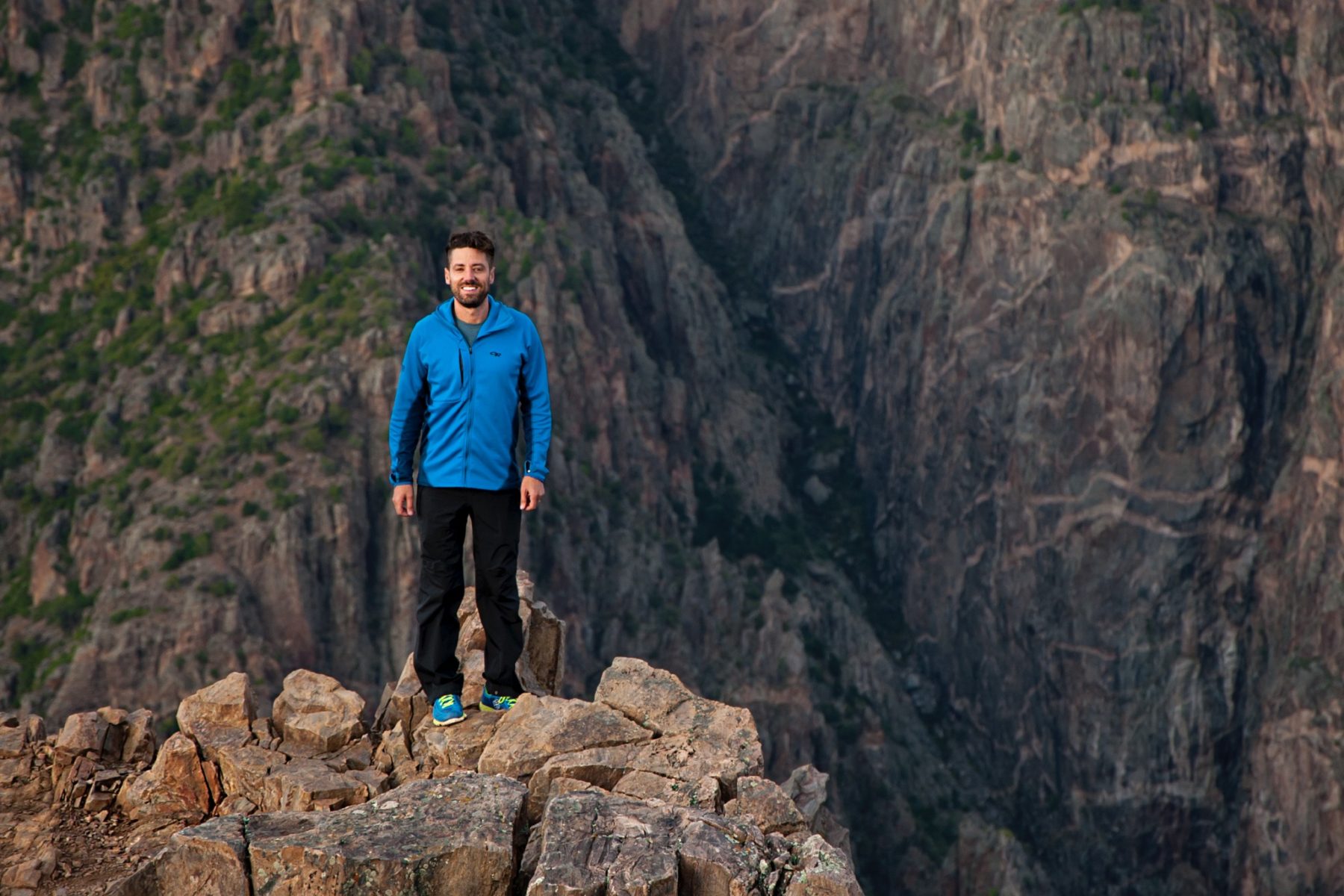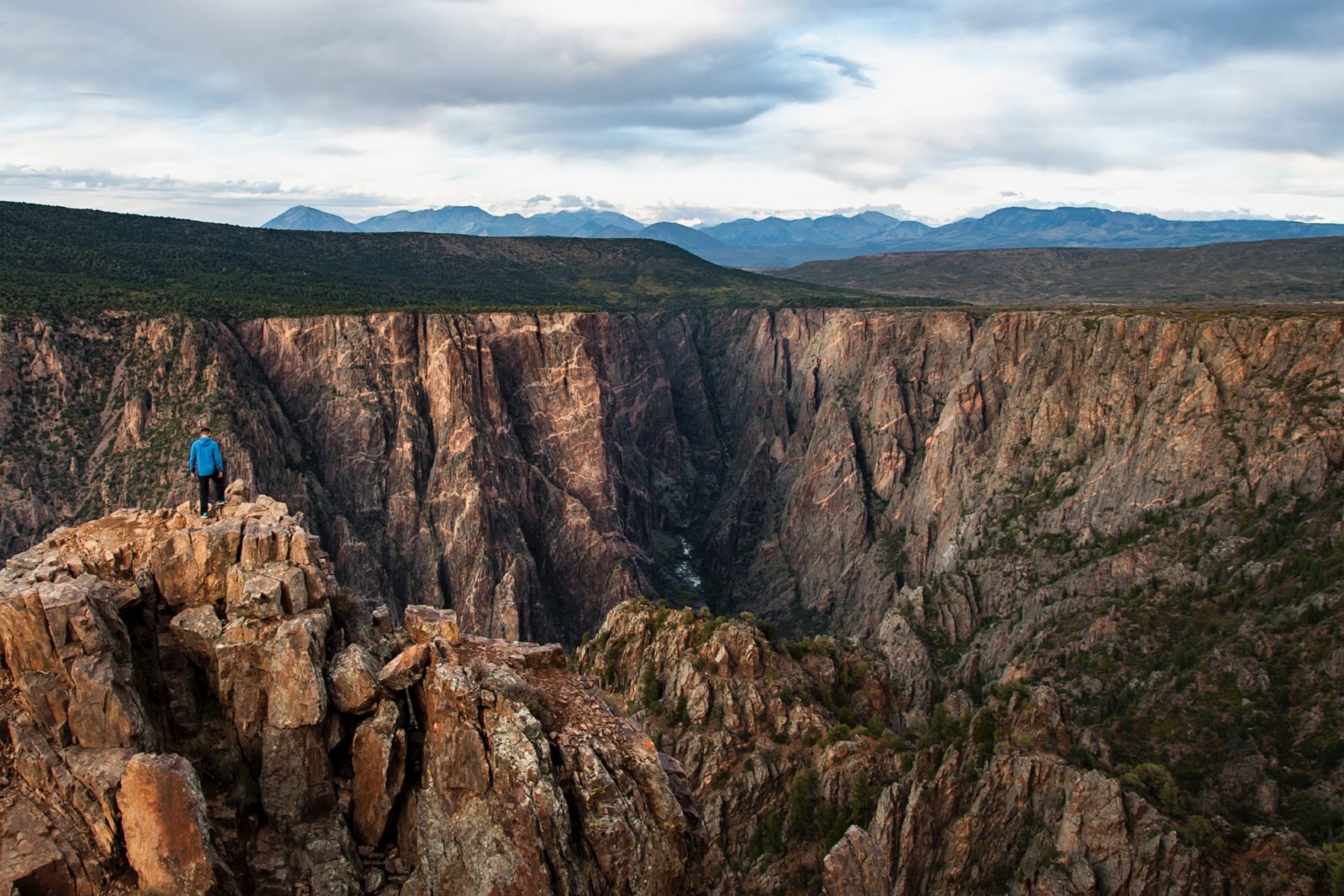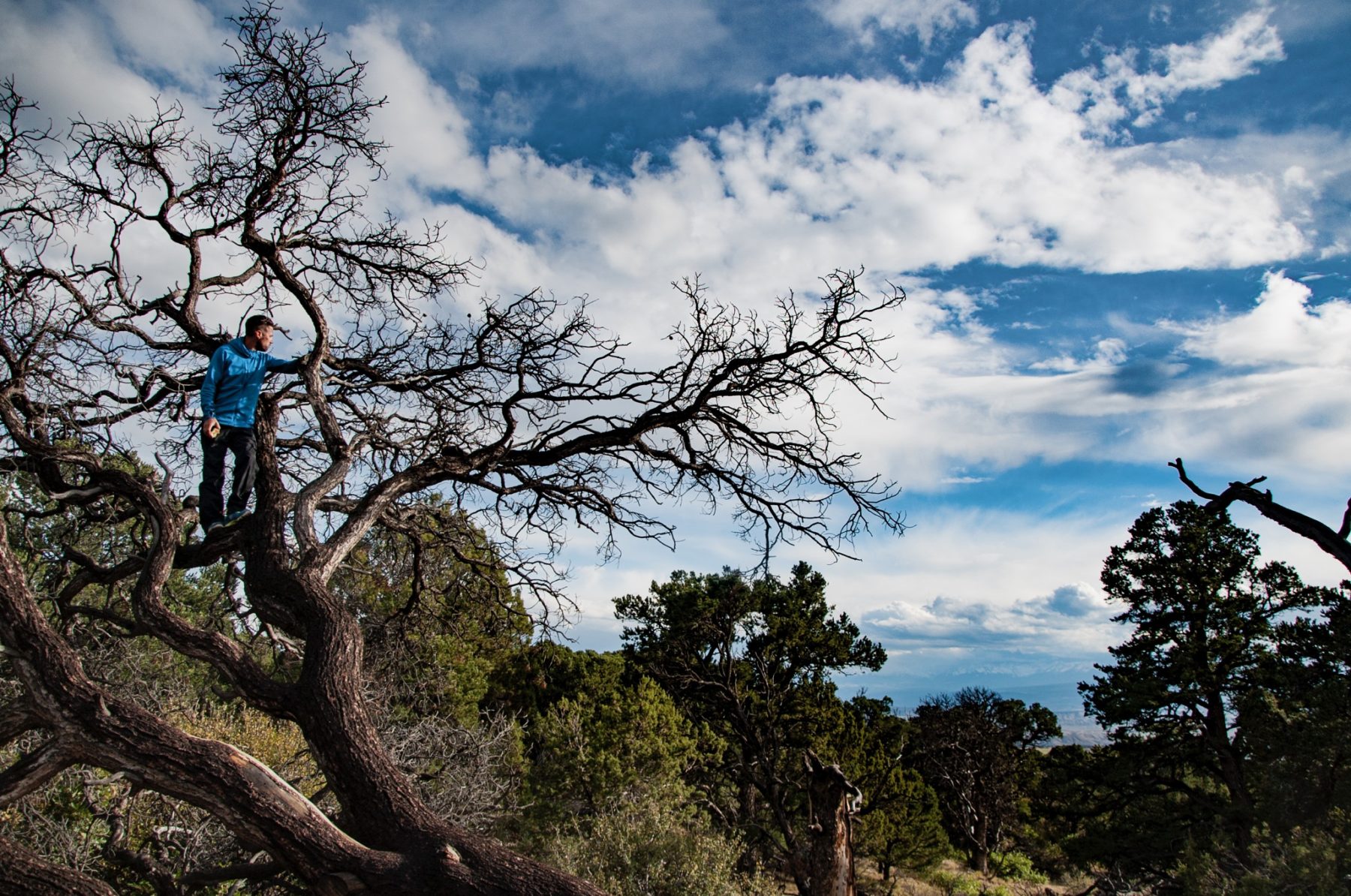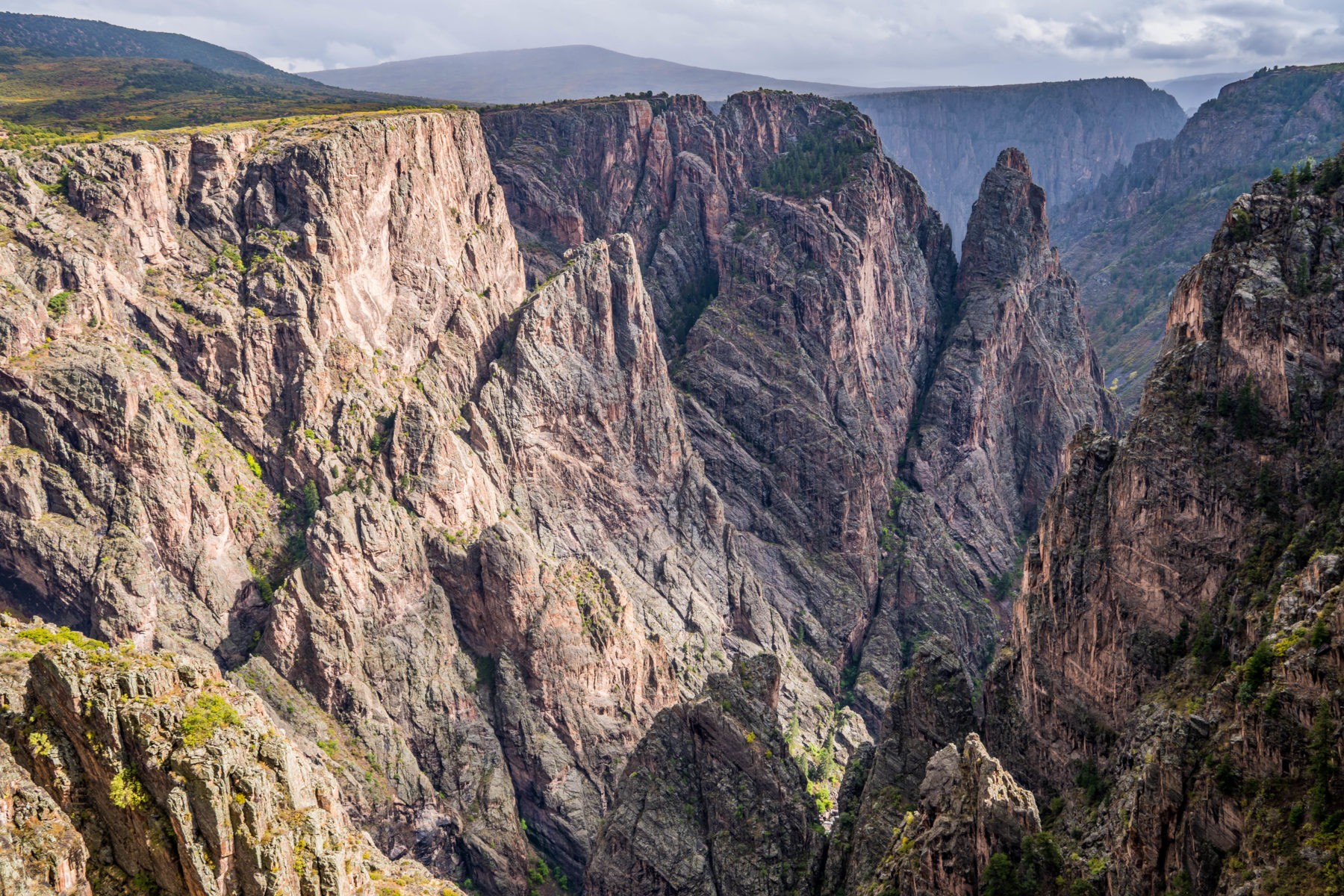
On September 30th, 2017, I visited Black Canyon of the Gunnison National Park in Colorado. I had spent a few days in Aspen visiting the Maroon Bells-Snowmass Wilderness and the ghost town of Ashcroft and then decided to head south to visit one of the most epic canyons on earth.
The Black Canyon of the Gunnison was considered too deep, too dark and too impenetrable by white settlers in Colorado, and by the Ute Indians that were native to western Colorado, so it was rarely ever seen until the 1930s. Mark Warner, a conservationist, successfully lobbied for a road to the canyon’s south rim and for its declaration as a national monument. Despite its magnificent, raw beauty, it remains one of the nation’s most overlooked and least visited national parks.
The canyon’s name owes itself to the fact that parts of the gorge only receive 33 minutes of sunlight a day. At its narrowest point the canyon is only 40 feet wide at the river. The extreme steepness and extreme depth of the Black Canyon formed as the result of several geologic processes acting together. The Gunnison River is primarily responsible for carving the canyon, though several other geologic events had to occur in order to form the canyon as it is seen today.
Several canyons of the American West are longer and some are deeper, but none combines the depth, sheerness, narrowness, and darkness of the Black Canyon. The canyon is 2250 feet deep!

My friend Heather and I entered the park at the South Rim and made our way to the visitors center. We had planned on hiking the Oak Flat Loop Trail but within a minute of setting out, it started hailing, and then lightning started striking all around us. We decided to shelter at the visitors center until the lightning cleared. We eventually made our way by car to 11 different scenic stops along the south rim of the canyon. Once we reached the end of the road, we hiked the Warner Point Trail to Warner Point. At the end of the trail we found an amazing rock spire that just had to be climbed. We were able to get some epic photos at the top of the spire.
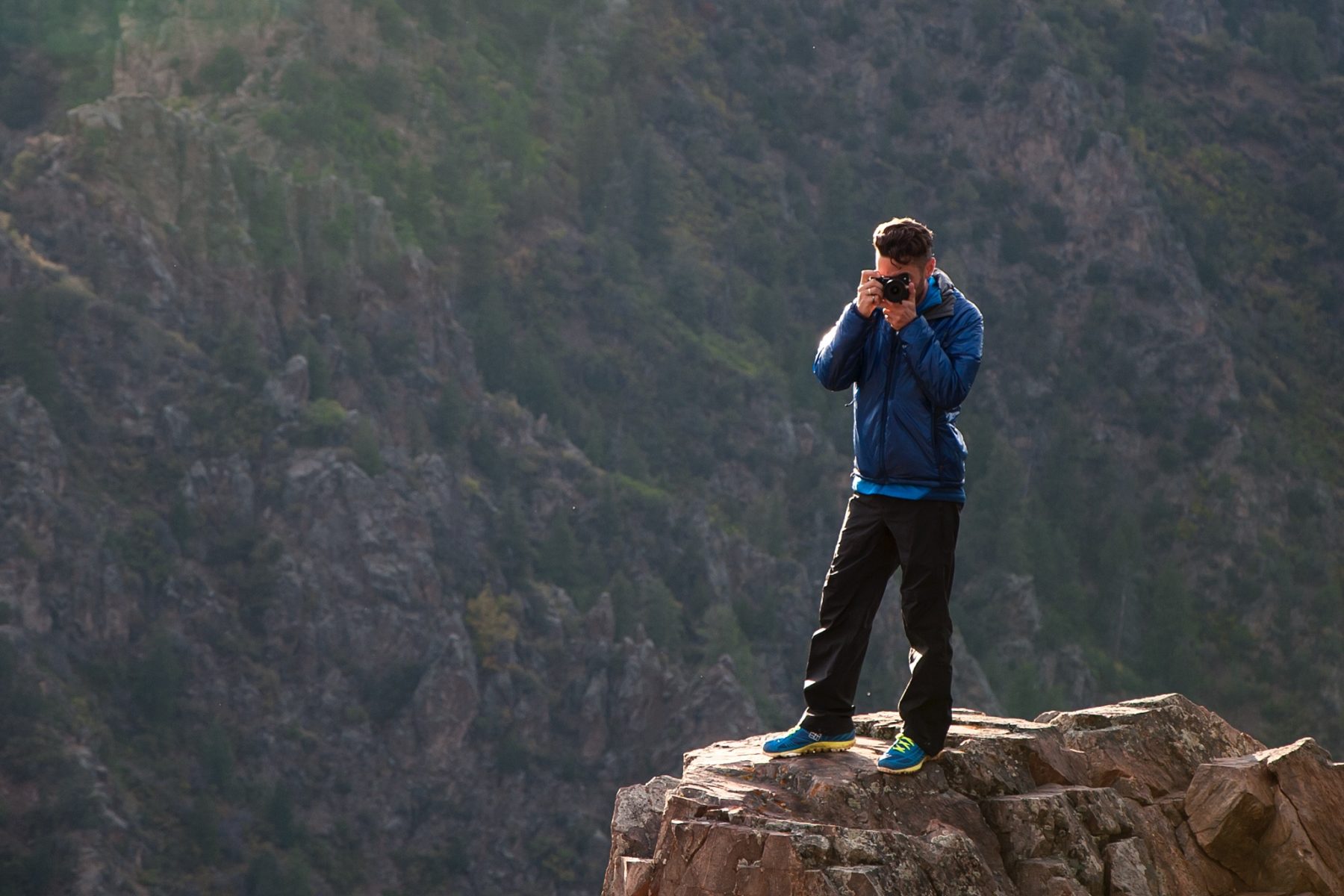
We needed a place to camp overnight after exploring the park, and learned about dispersed camping on BLM Land. The Bureau of Land Management is an agency within the United States Department of the Interior that administers more than 247.3 million acres of public lands in the United States (which constitutes one-eighth of the landmass of the country). They have free camping in some of the most amazing wilderness areas around the country. It’s far more private than camping in a campground, and it’s totally FREE! We ended up deciding to stay at Billy Creek after learning about it on the Free Campsites website. We drove up to the campsite in the middle of the night and had no idea what was around us, but found a perfect spot under the trees, next to the creek. I stayed in a grassy area under some trees in my SUV and Heather stayed on a dirt pad with her van. We made a bonfire and had a perfect evening while listening to coyotes call all around us.
